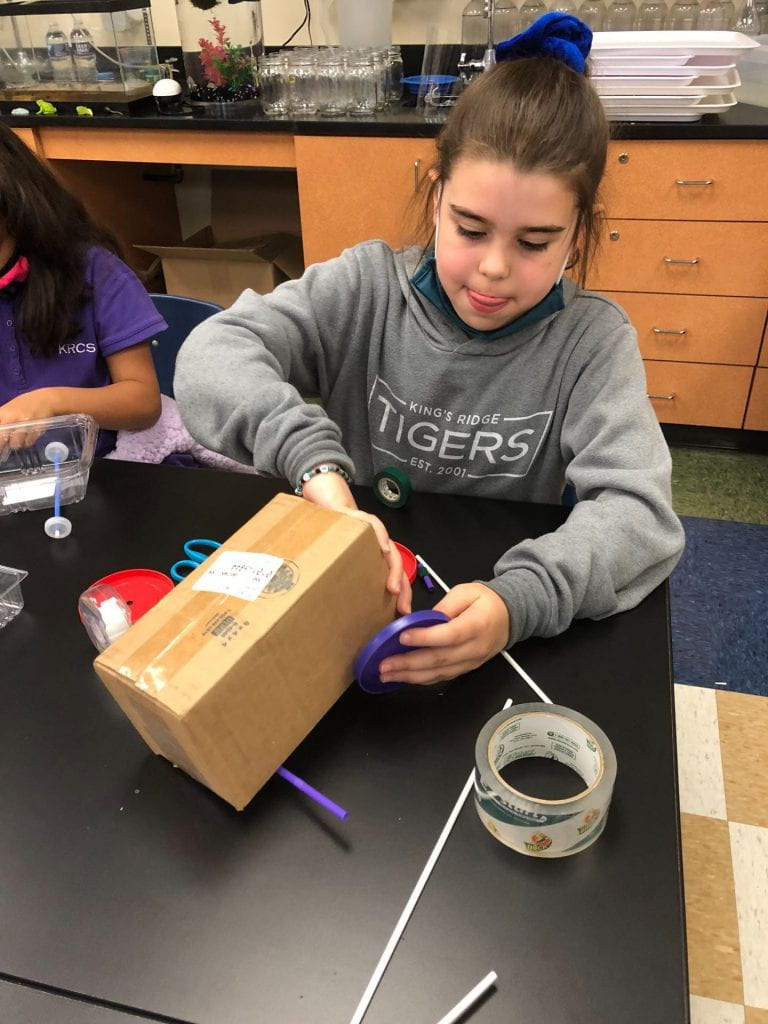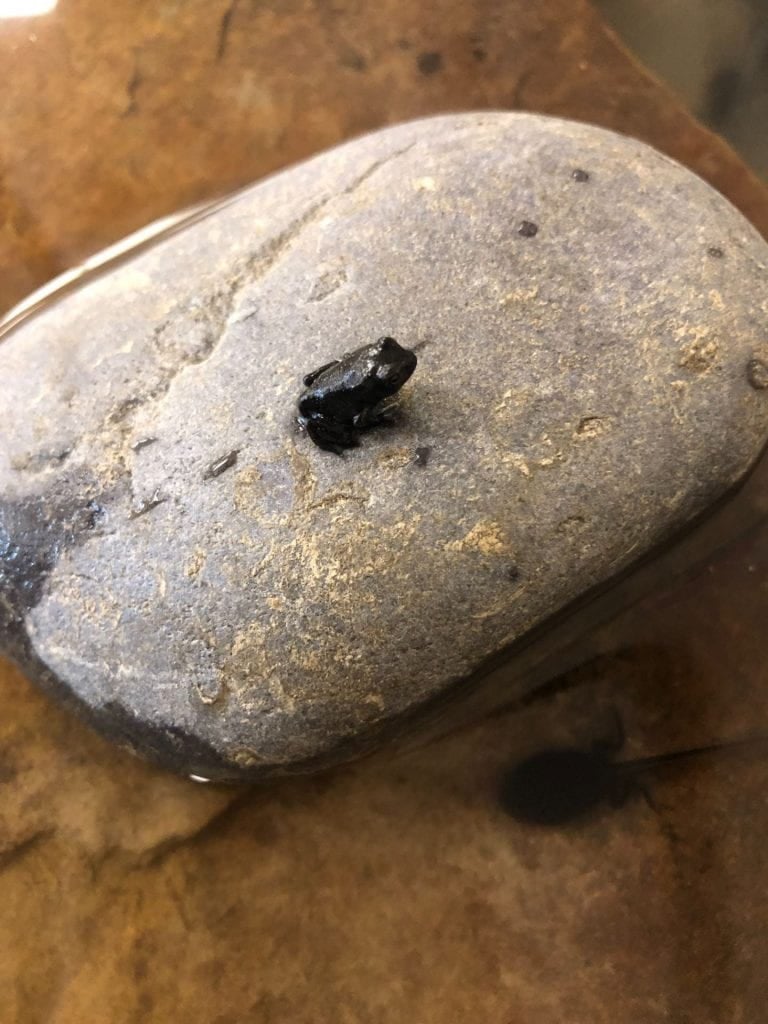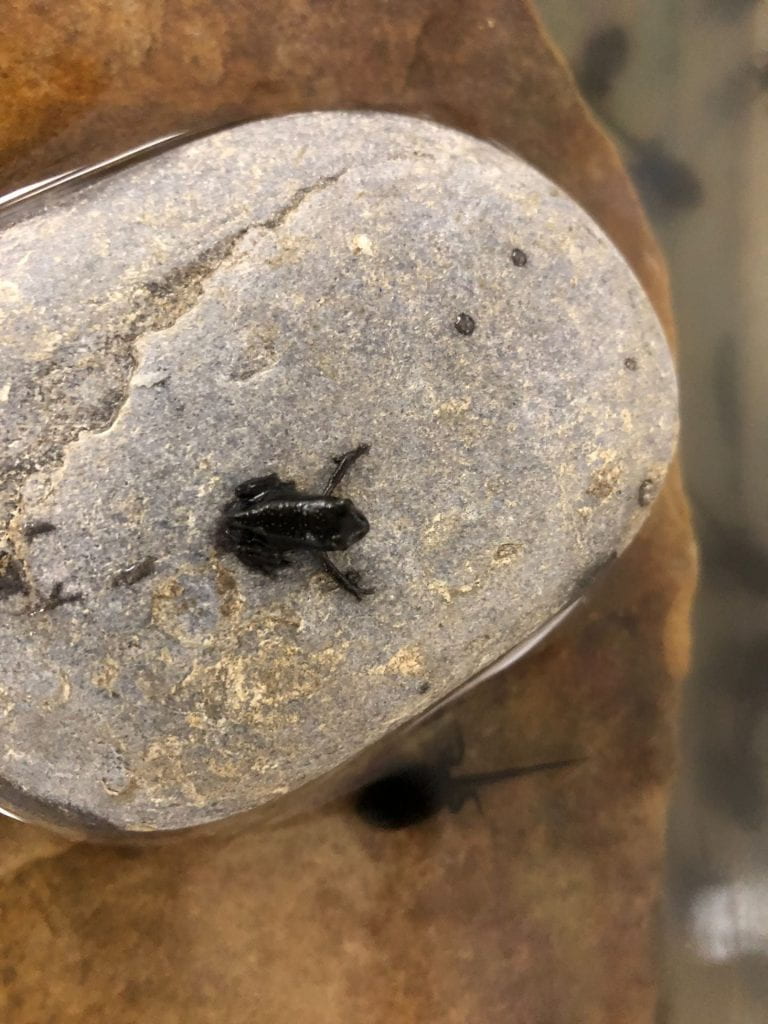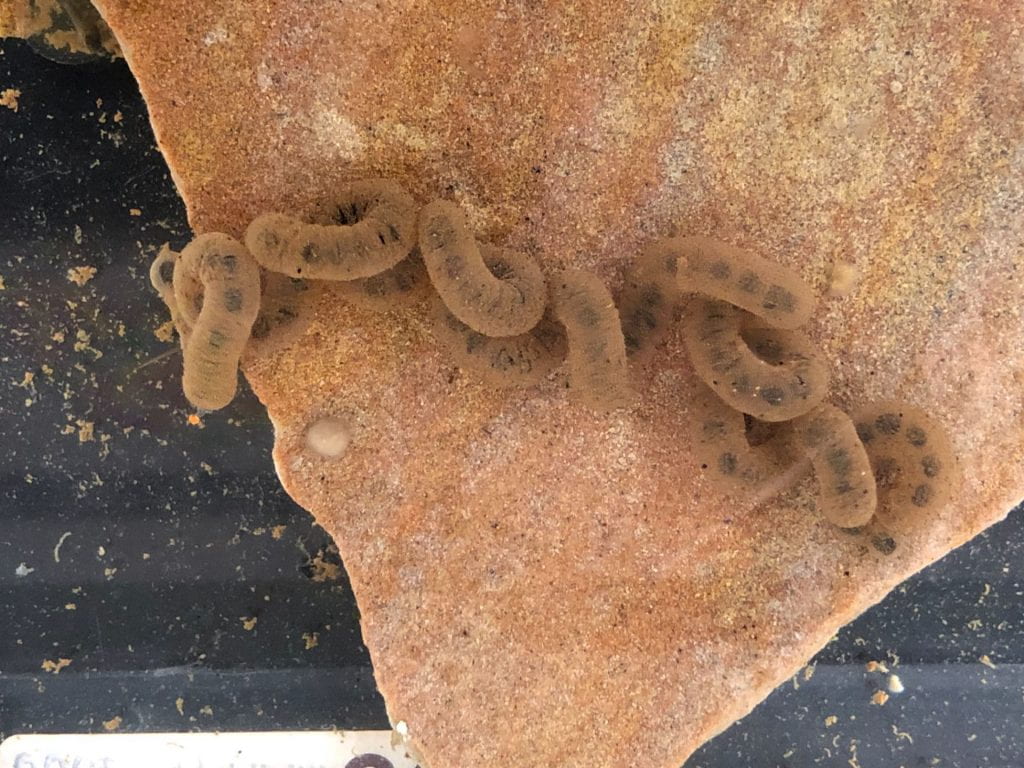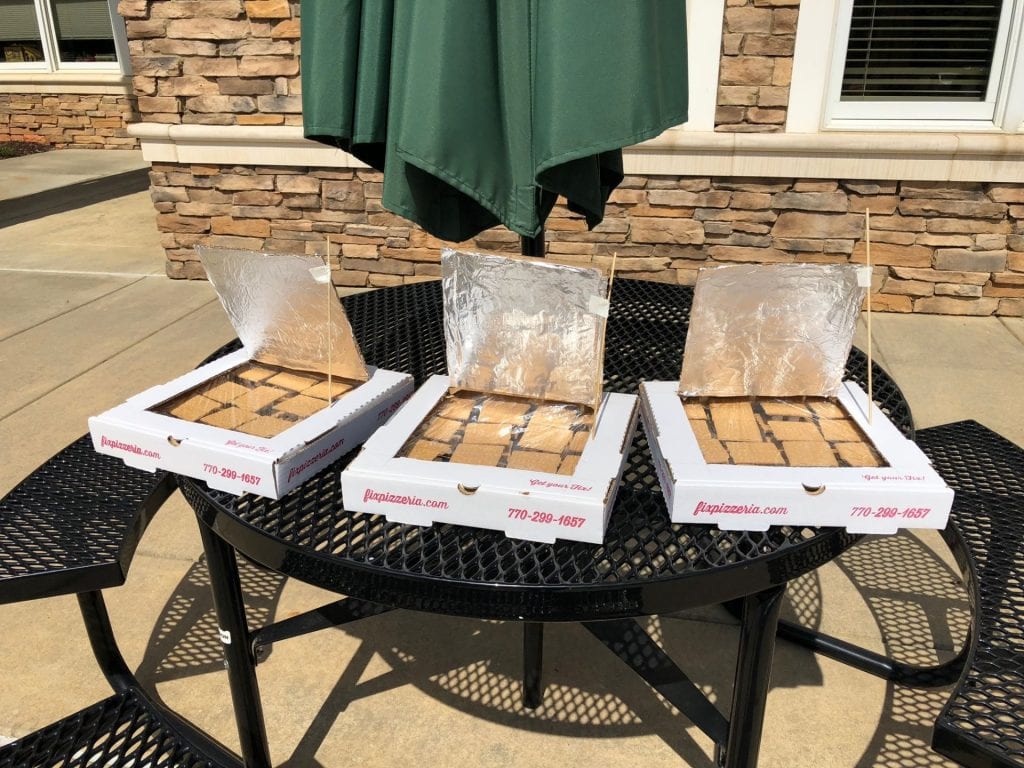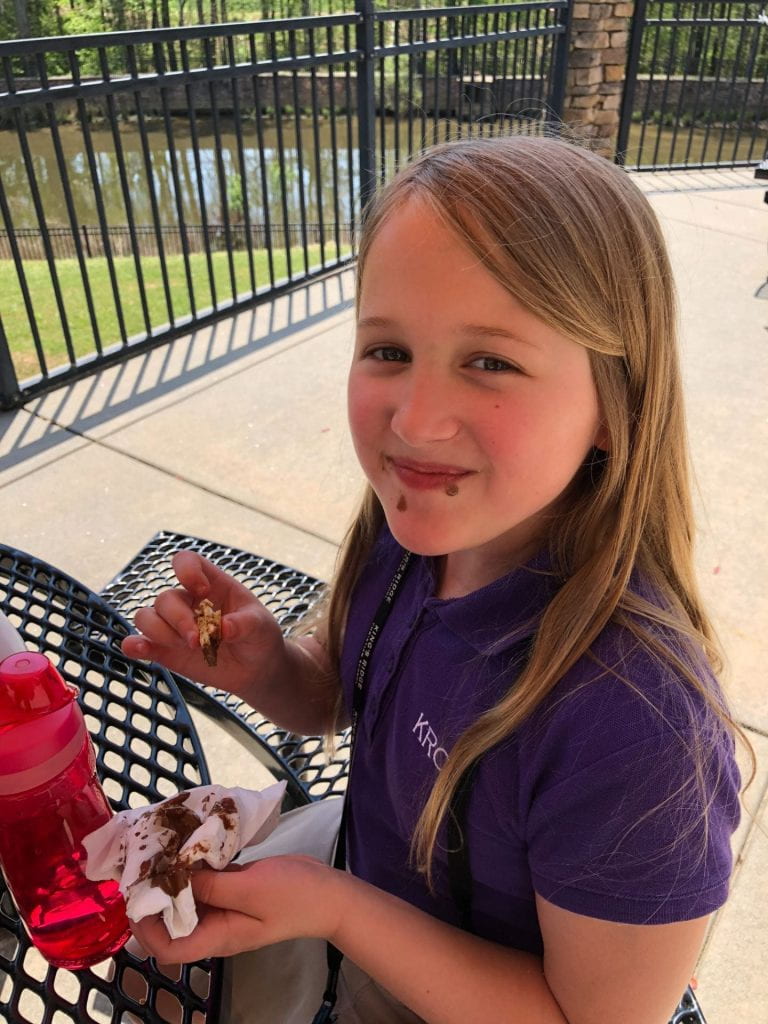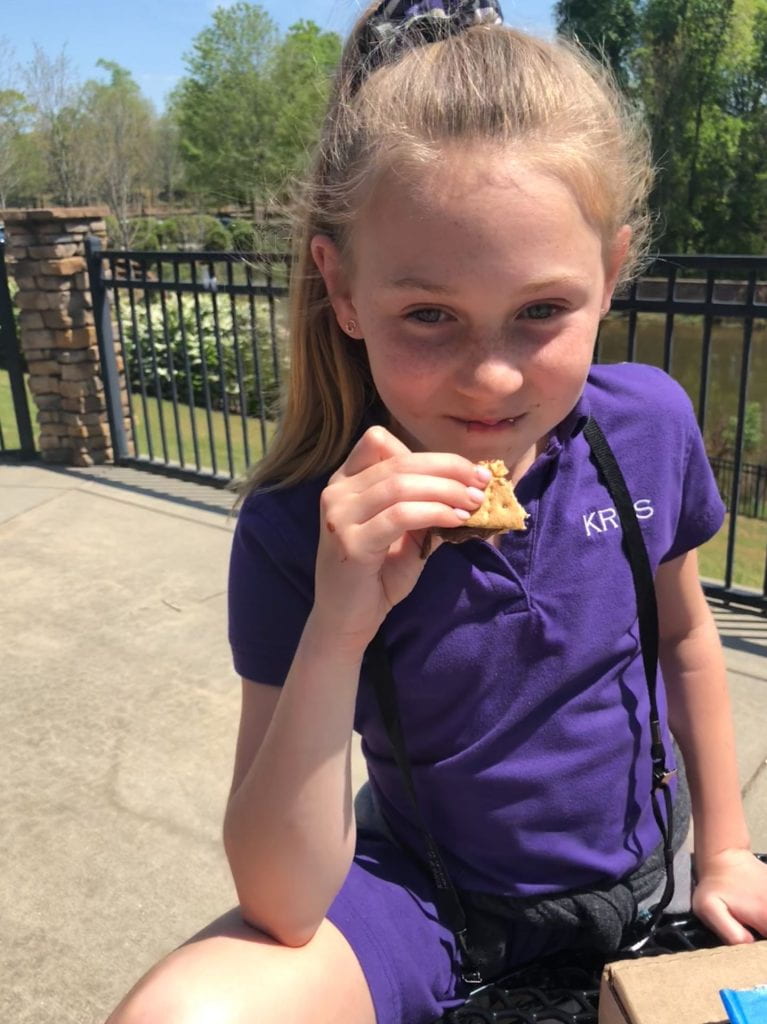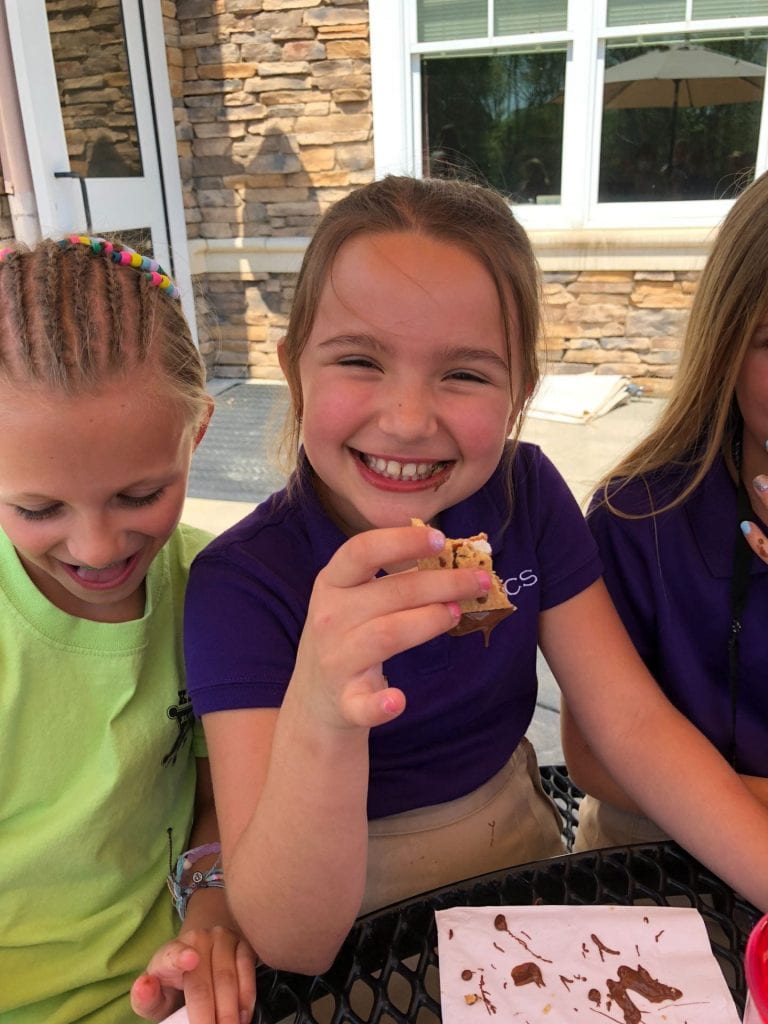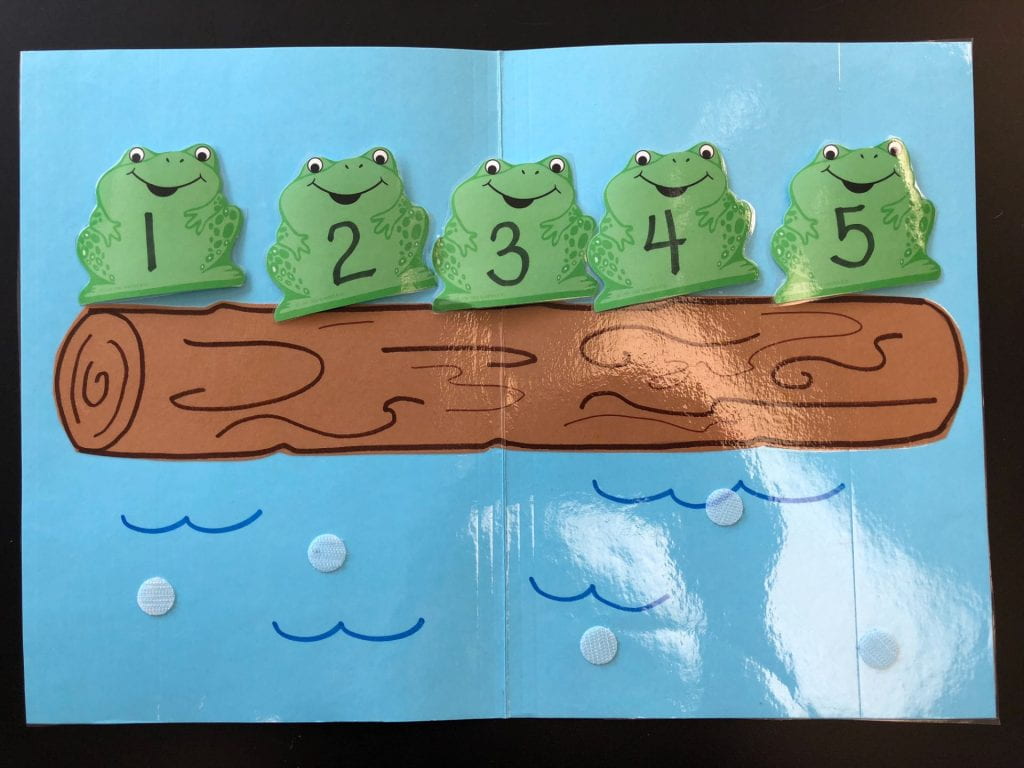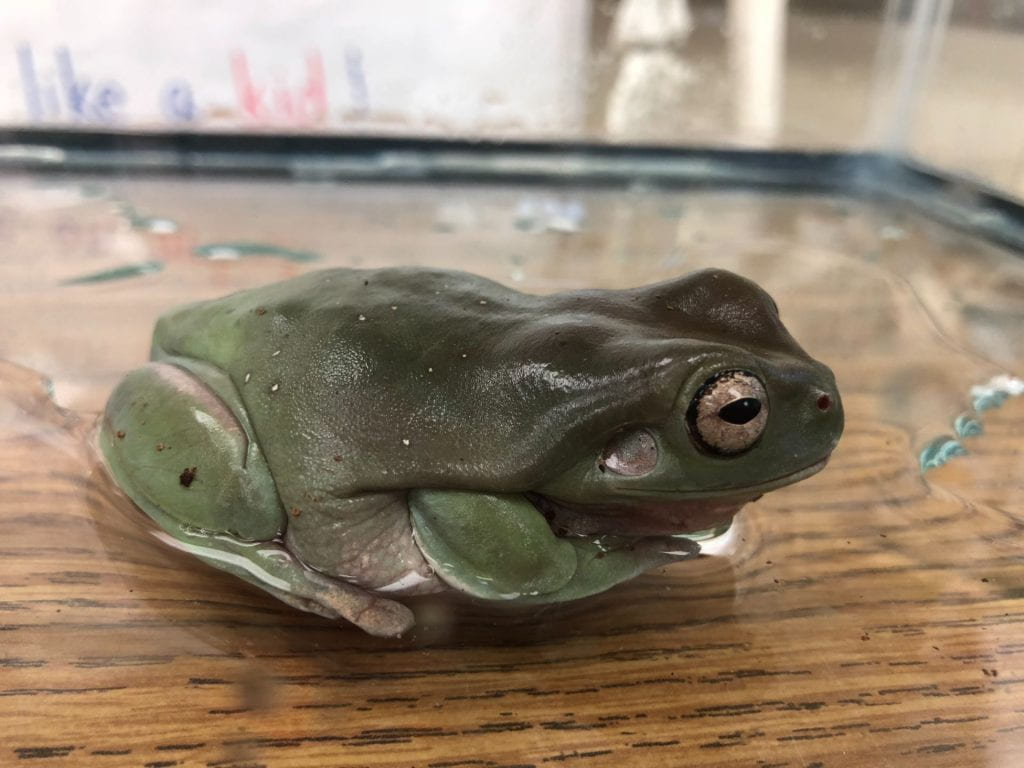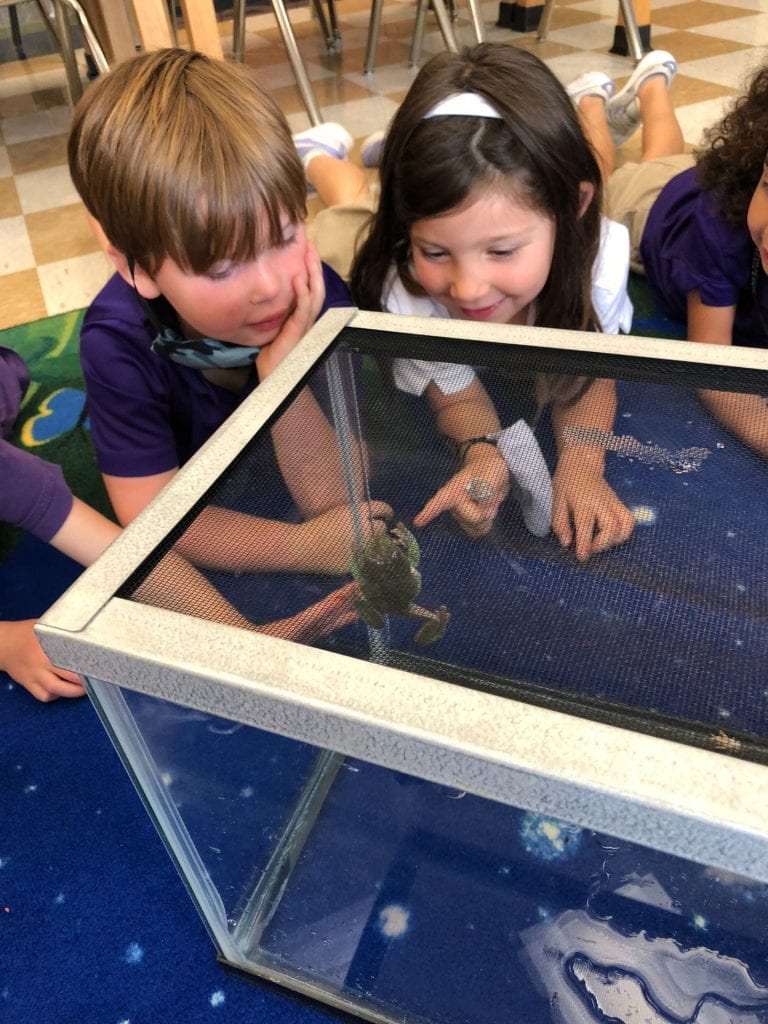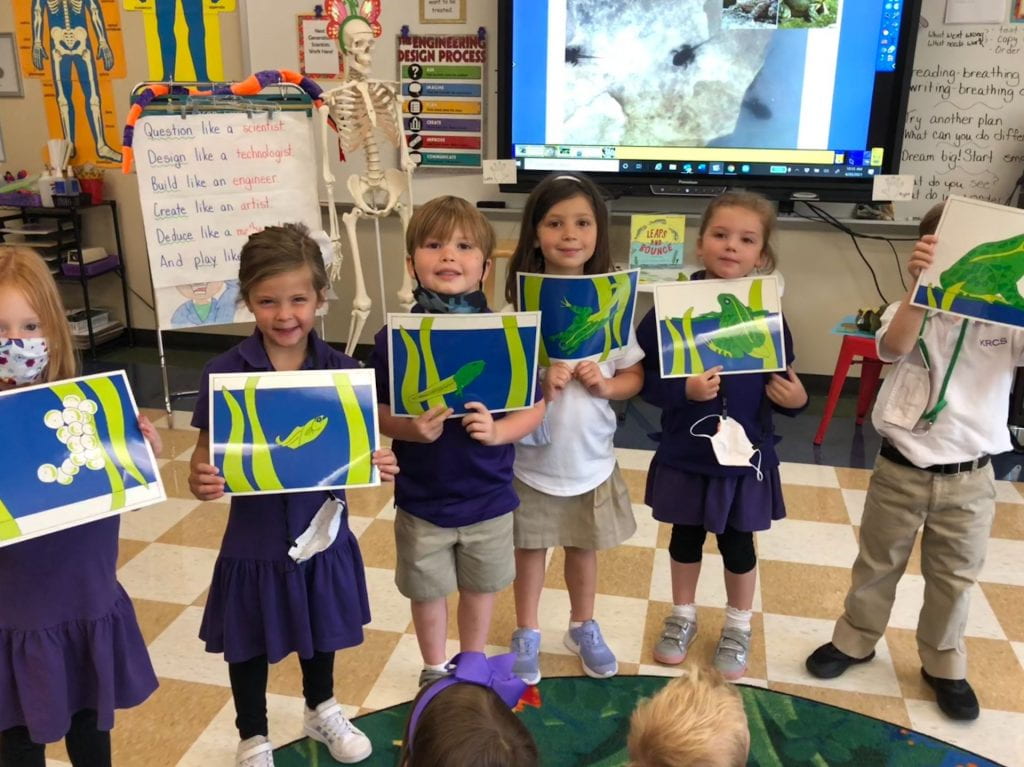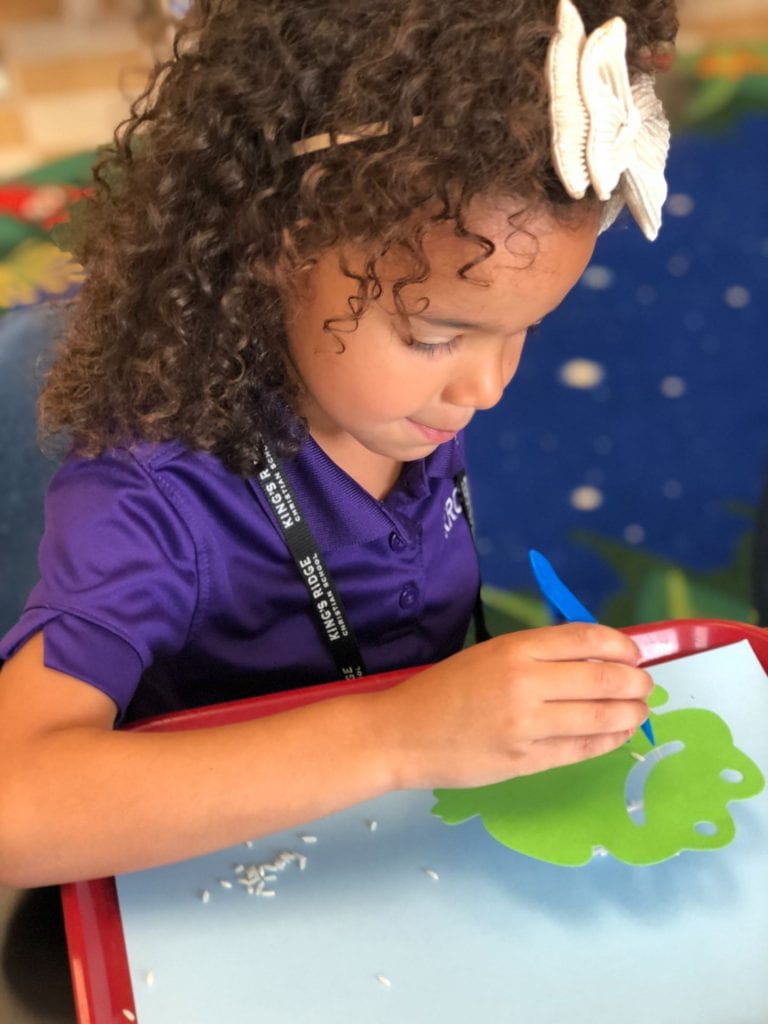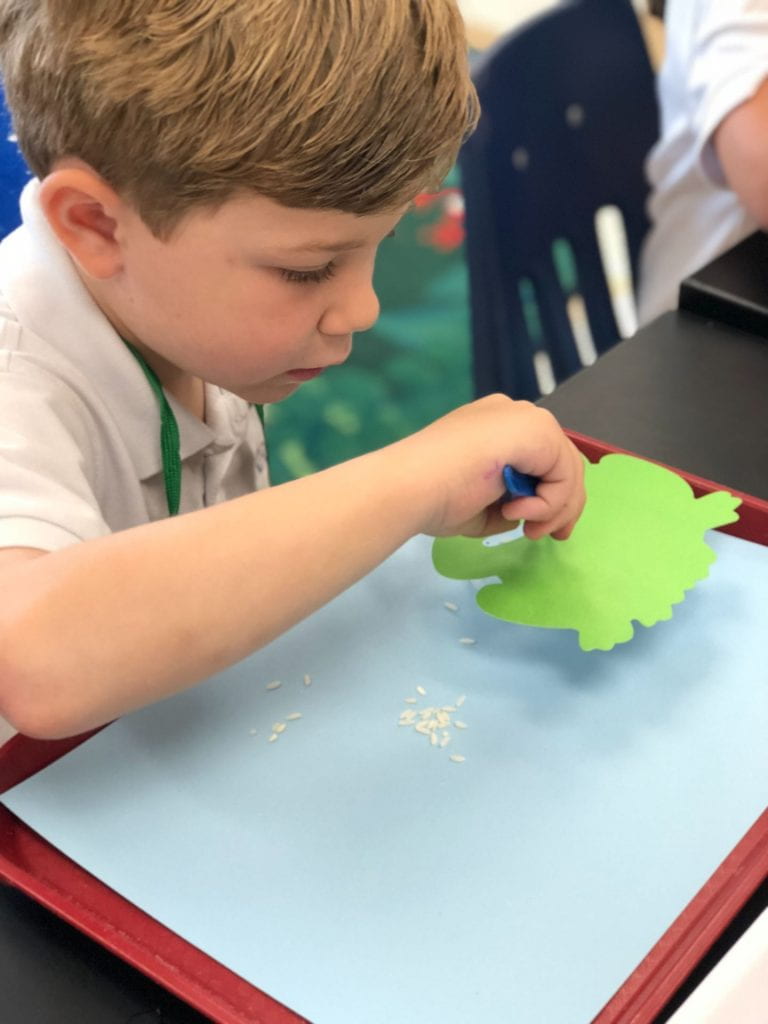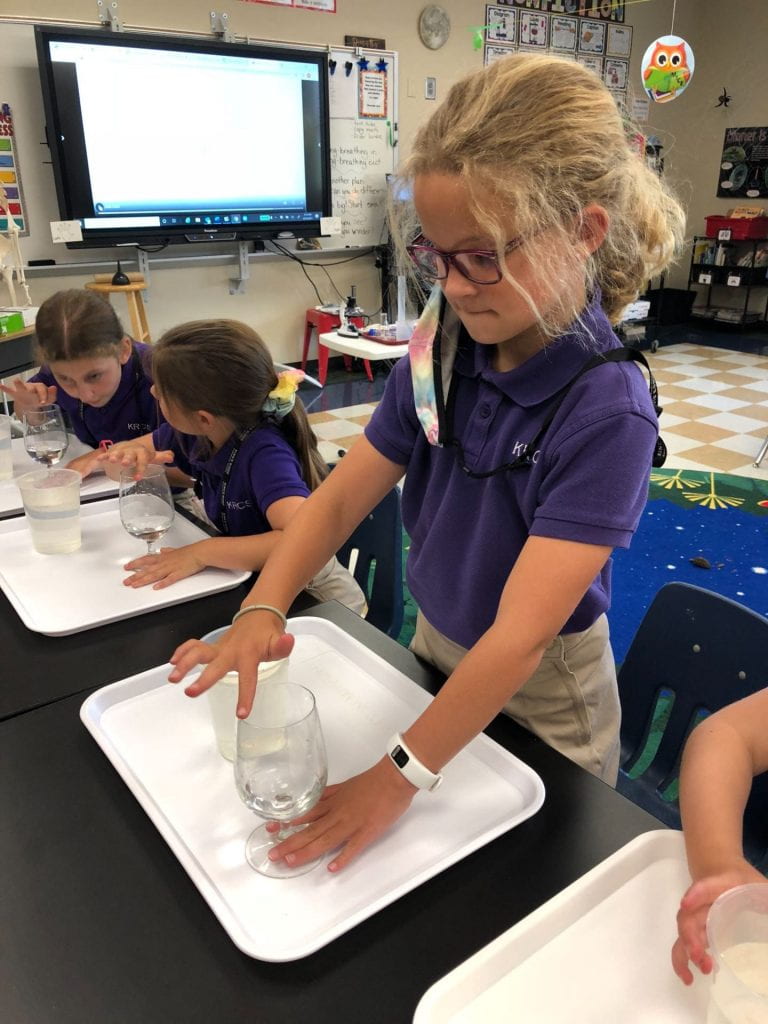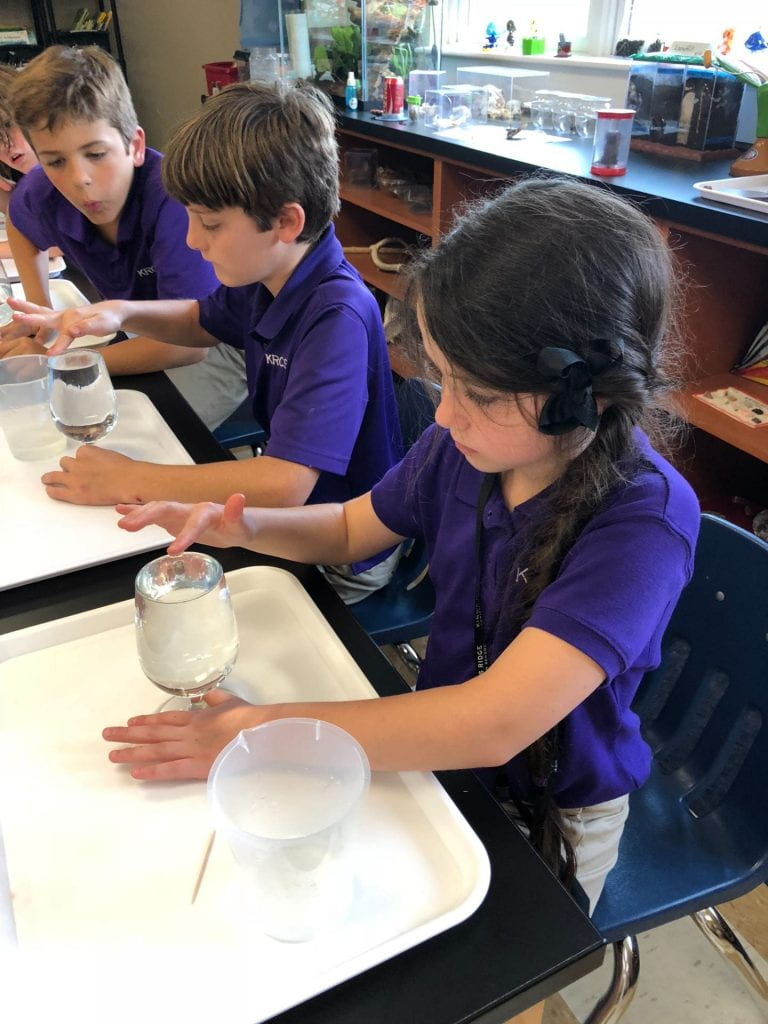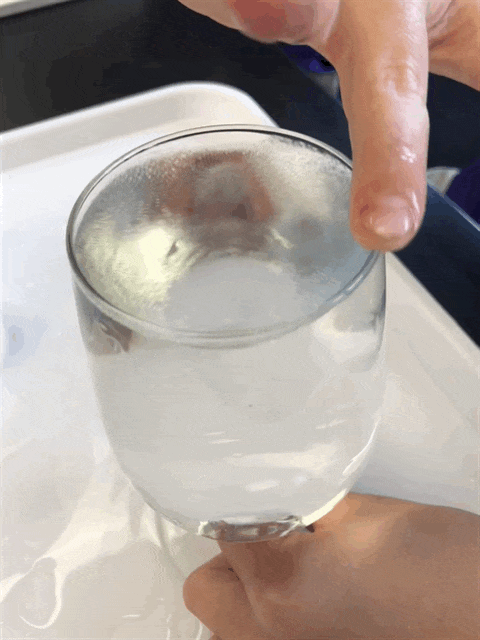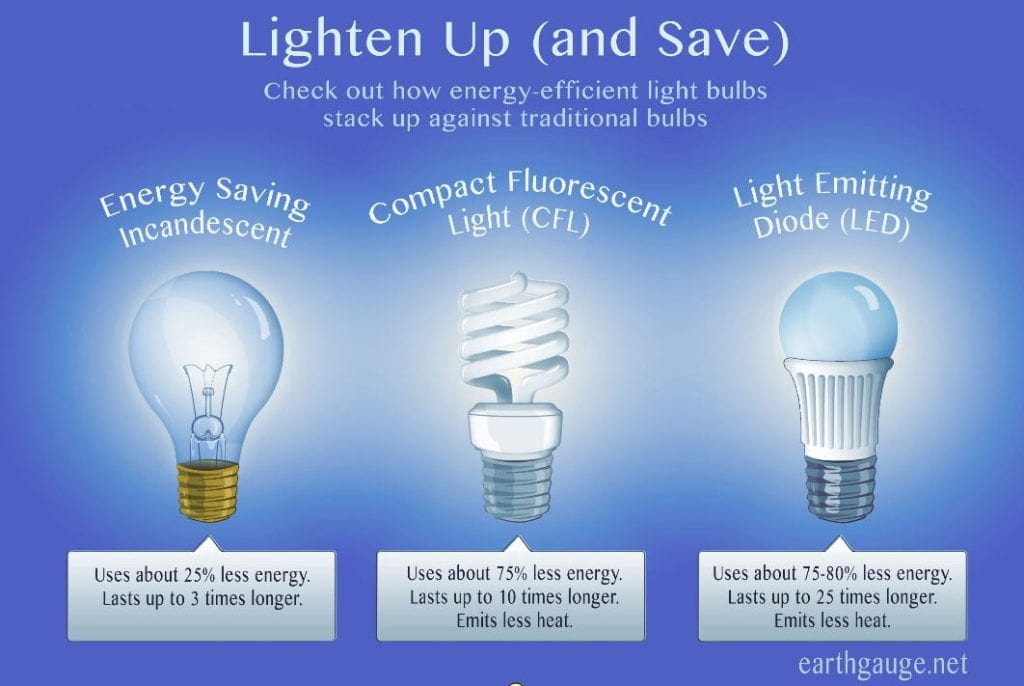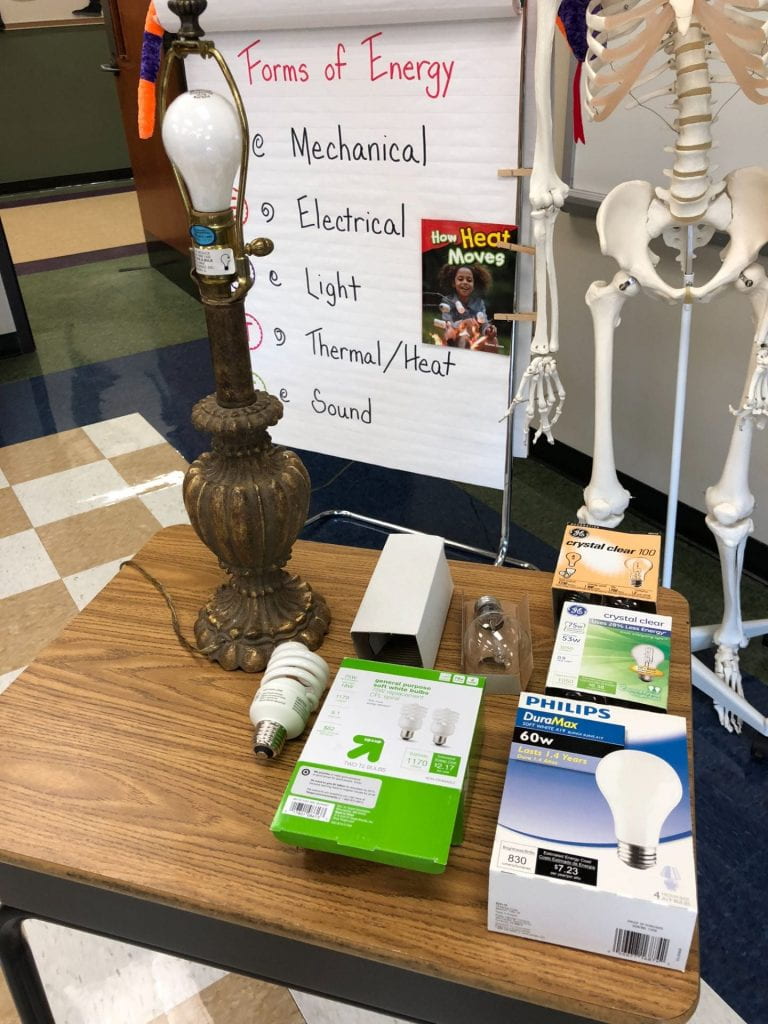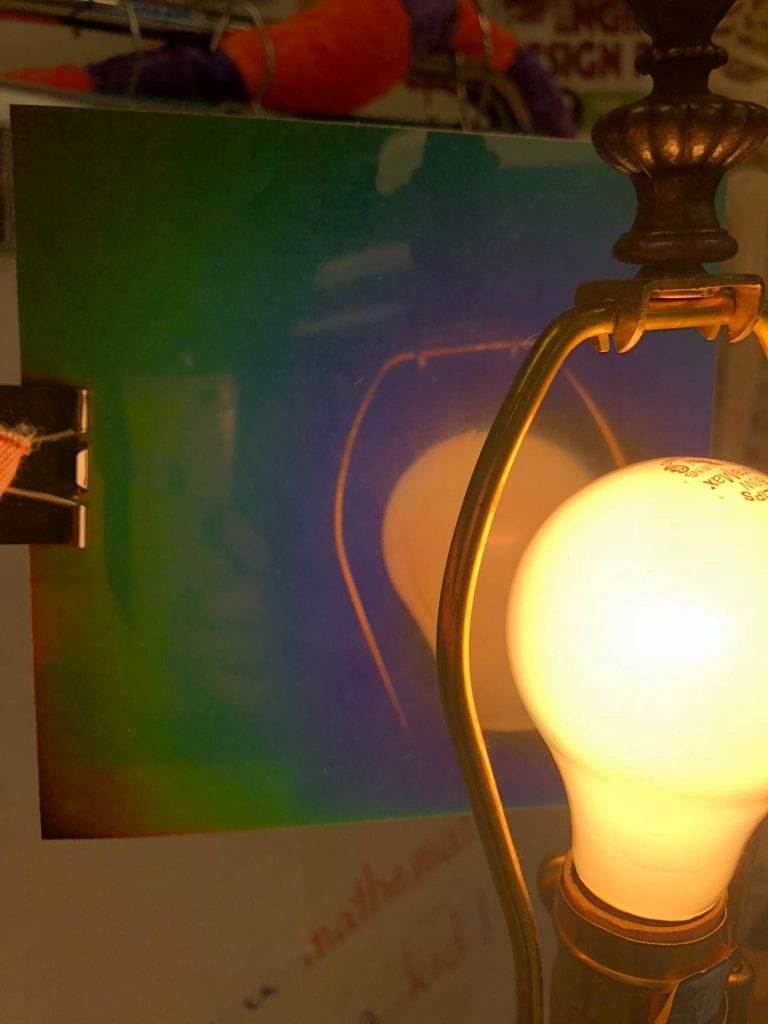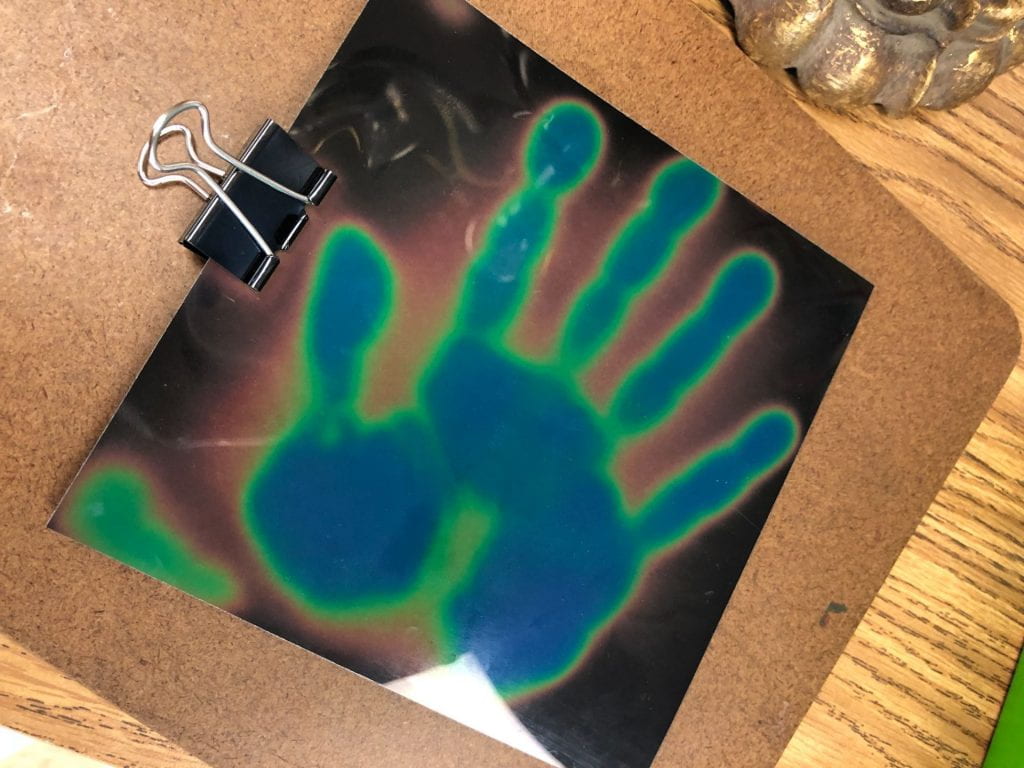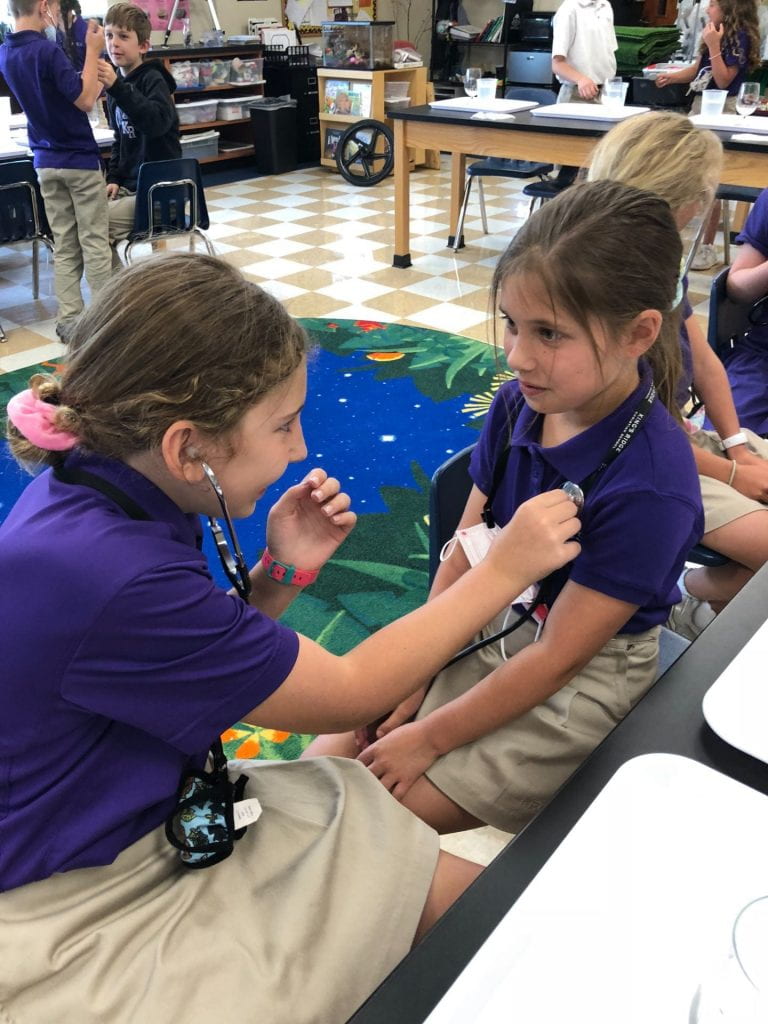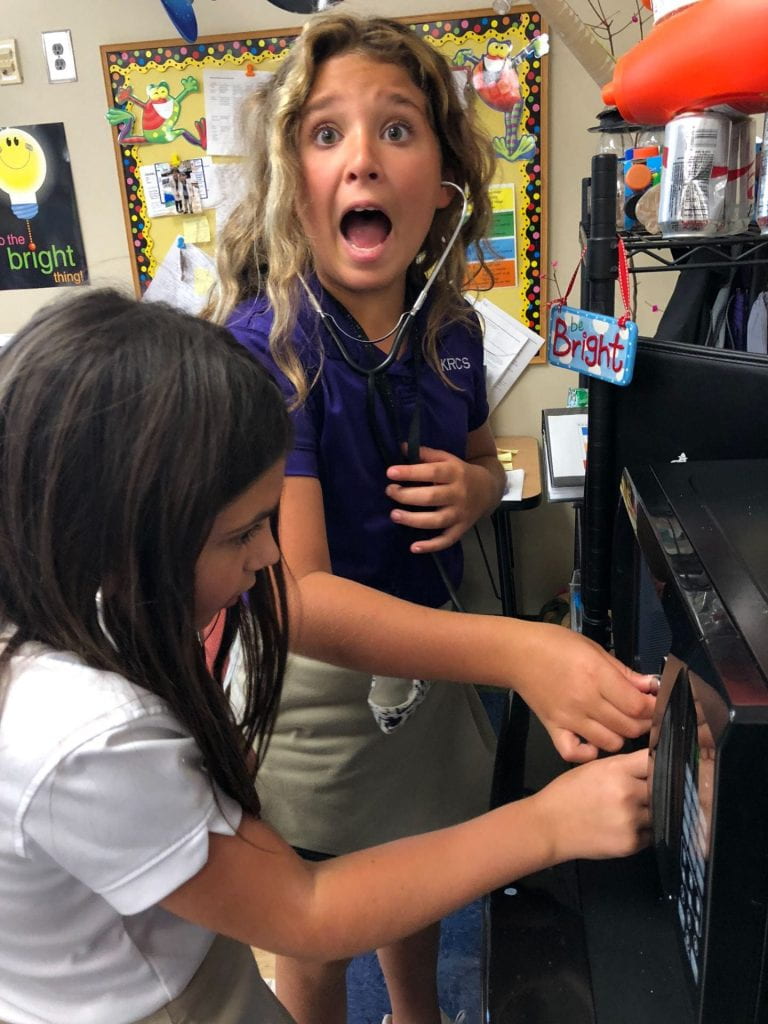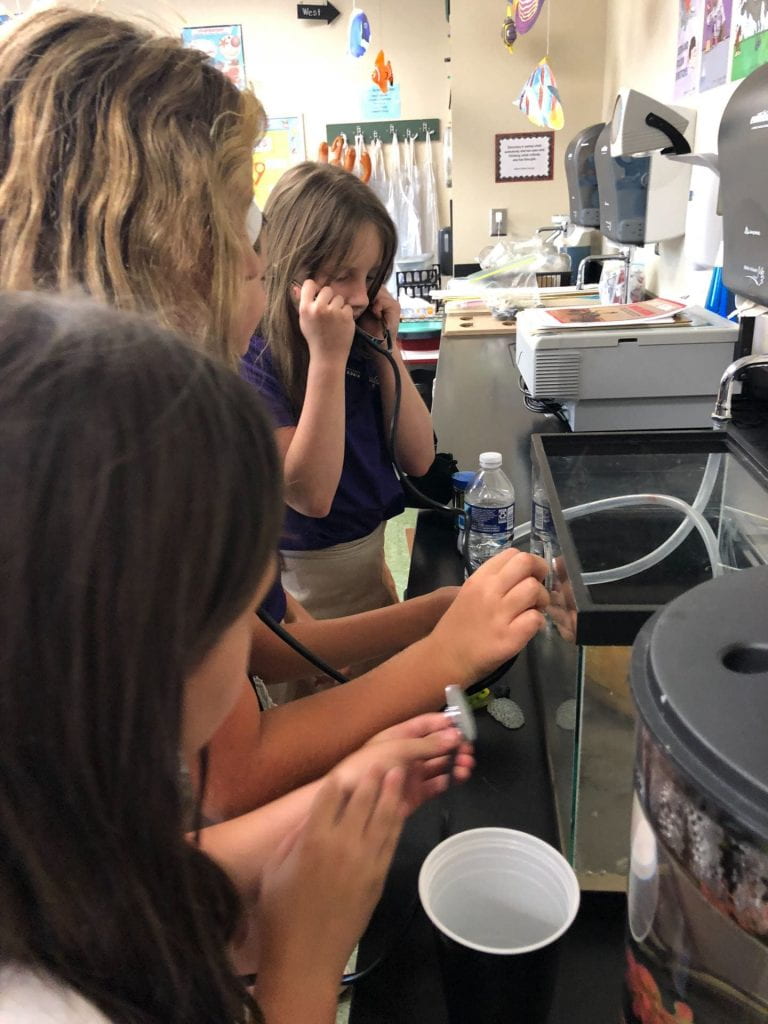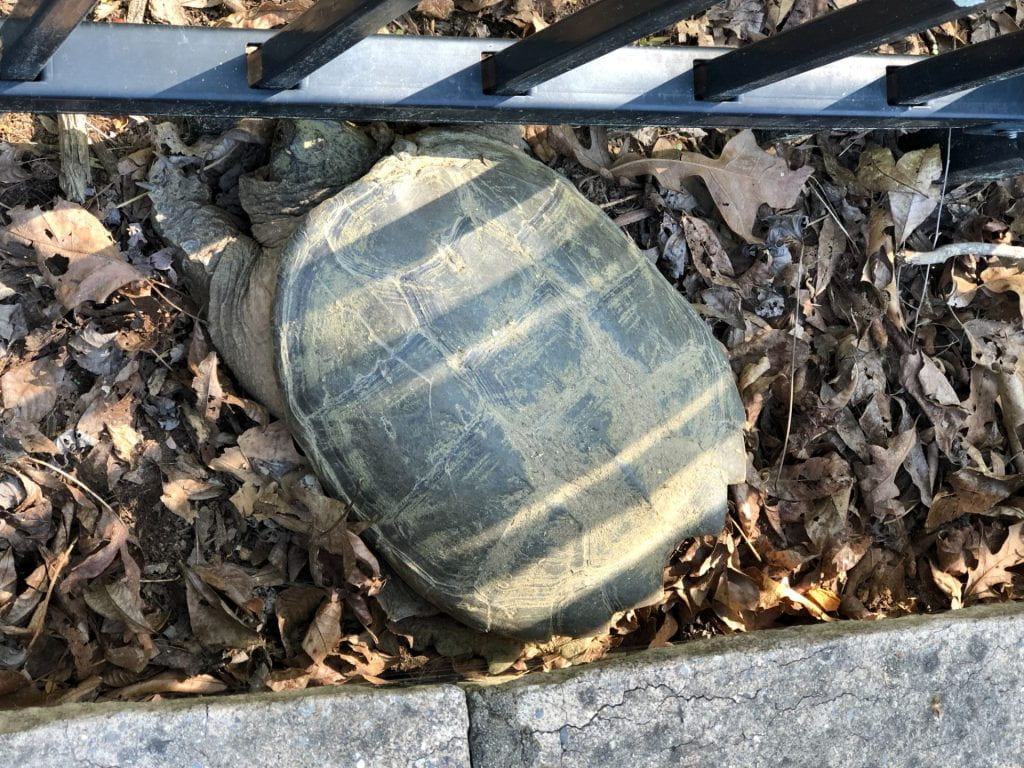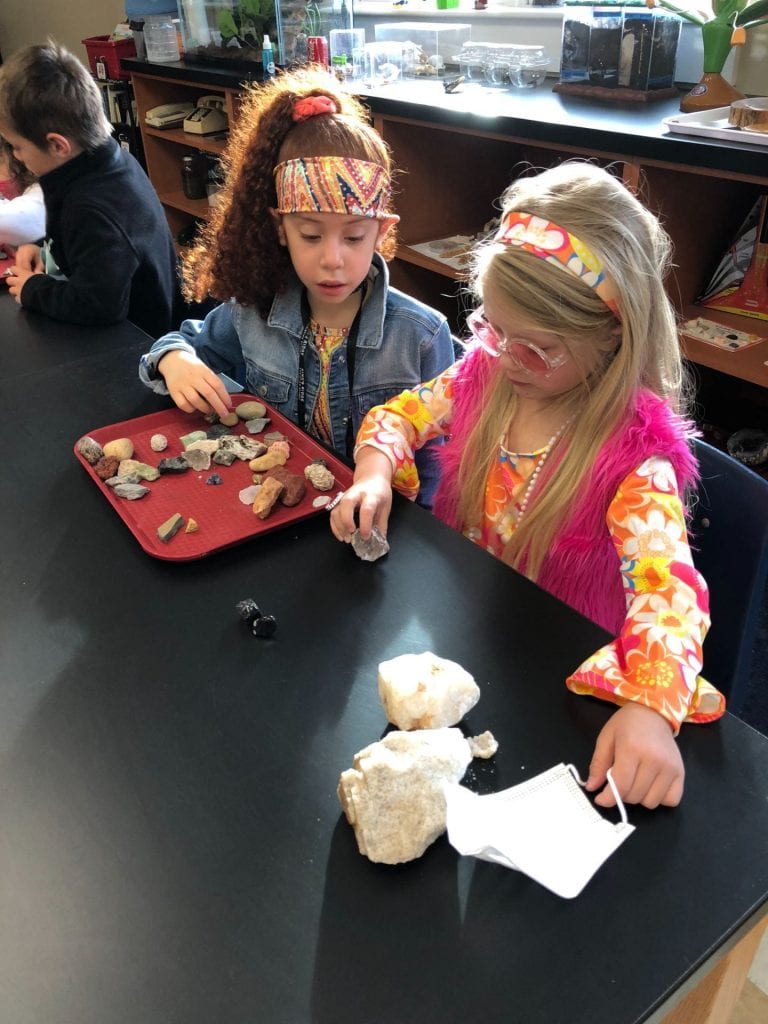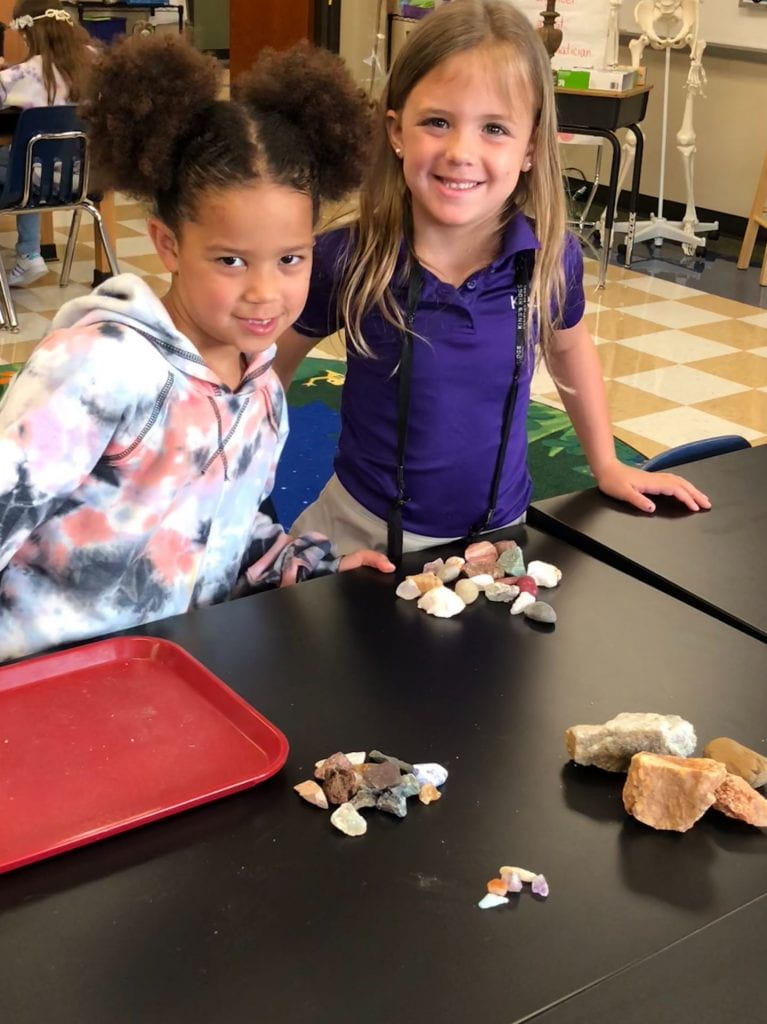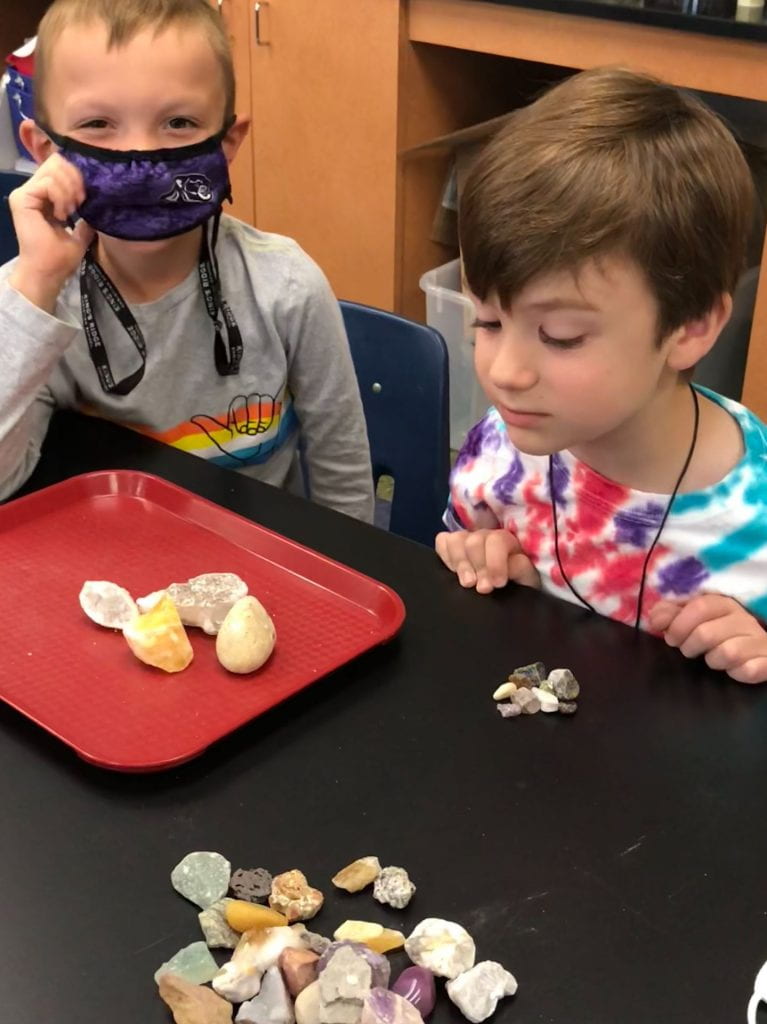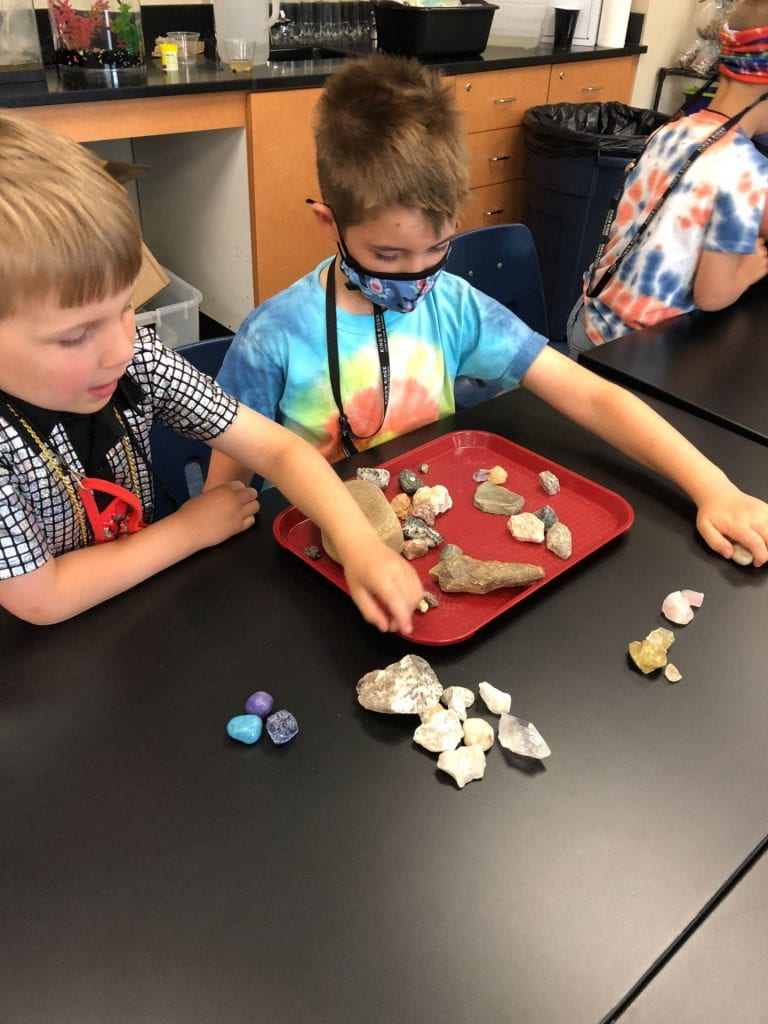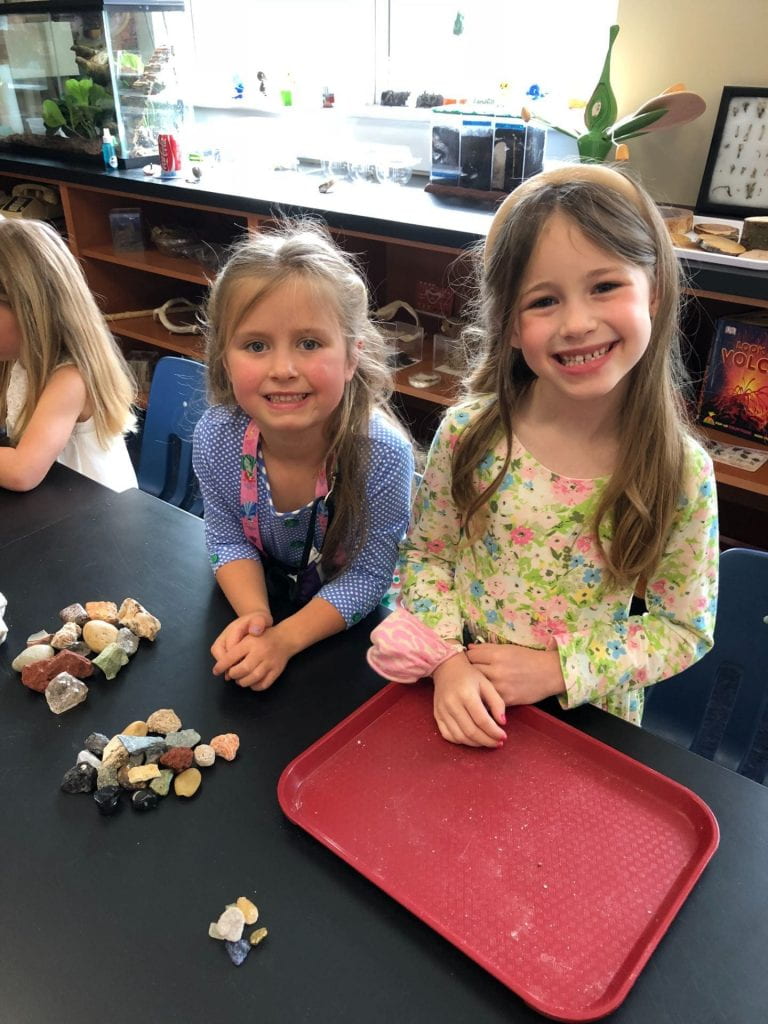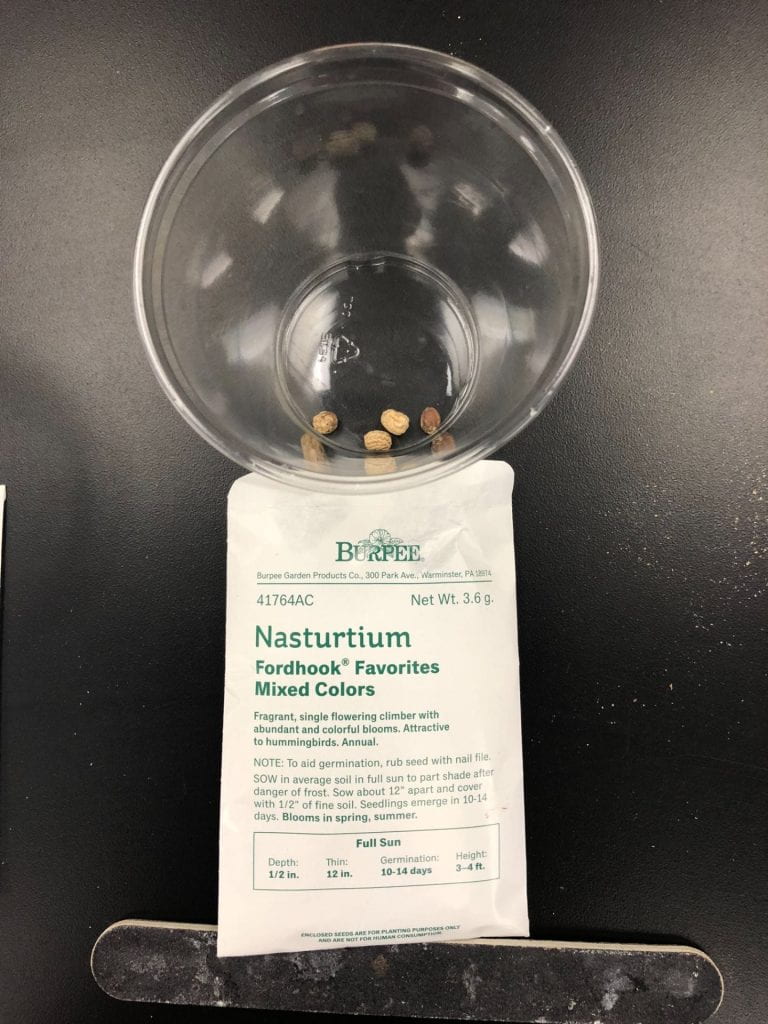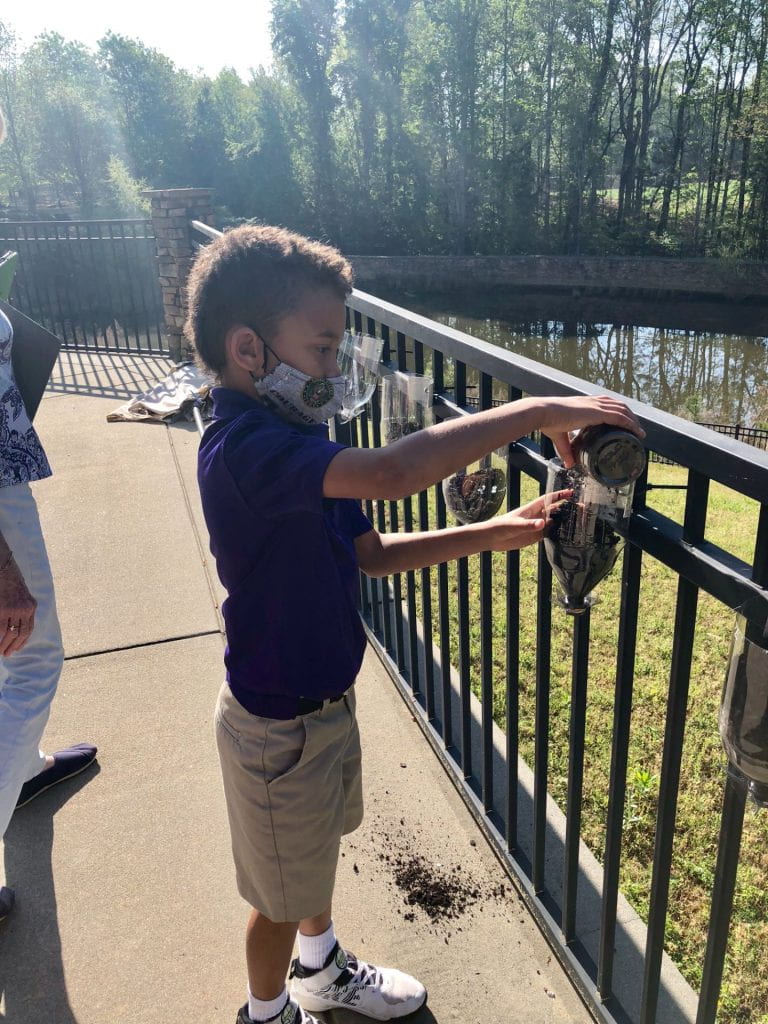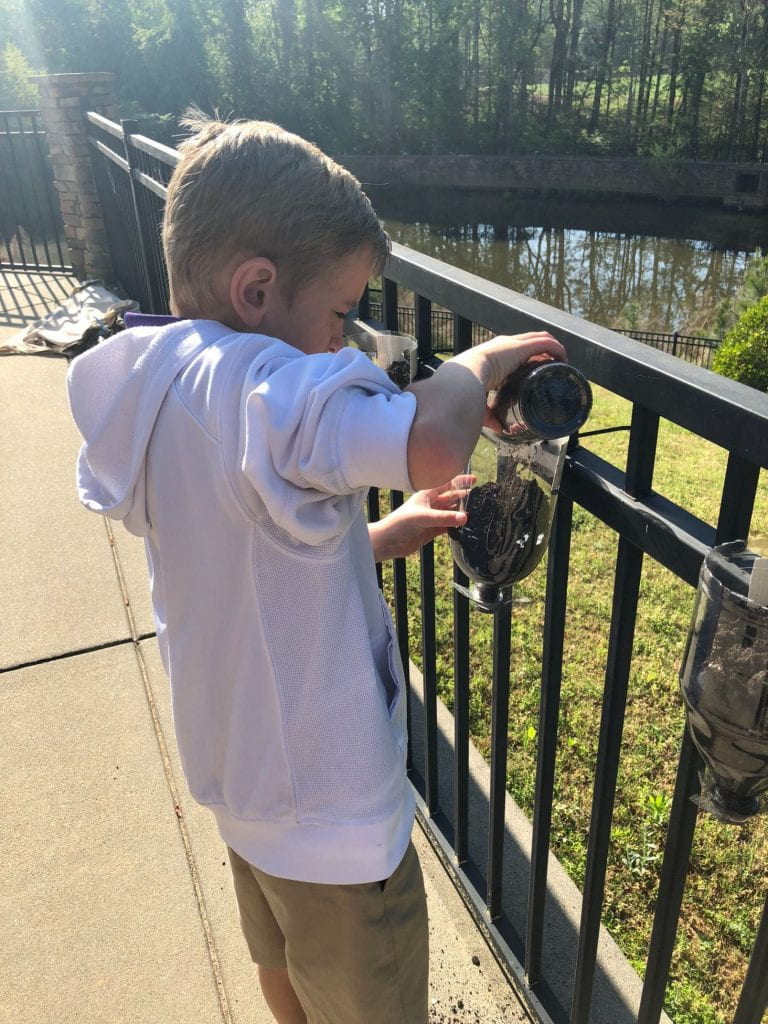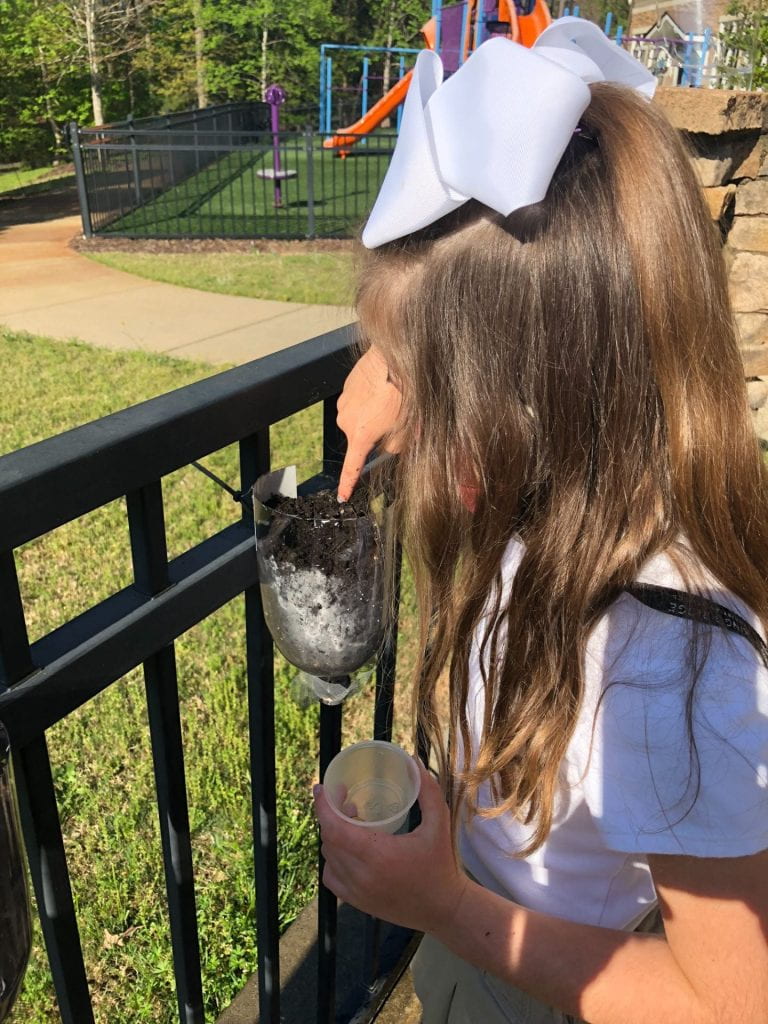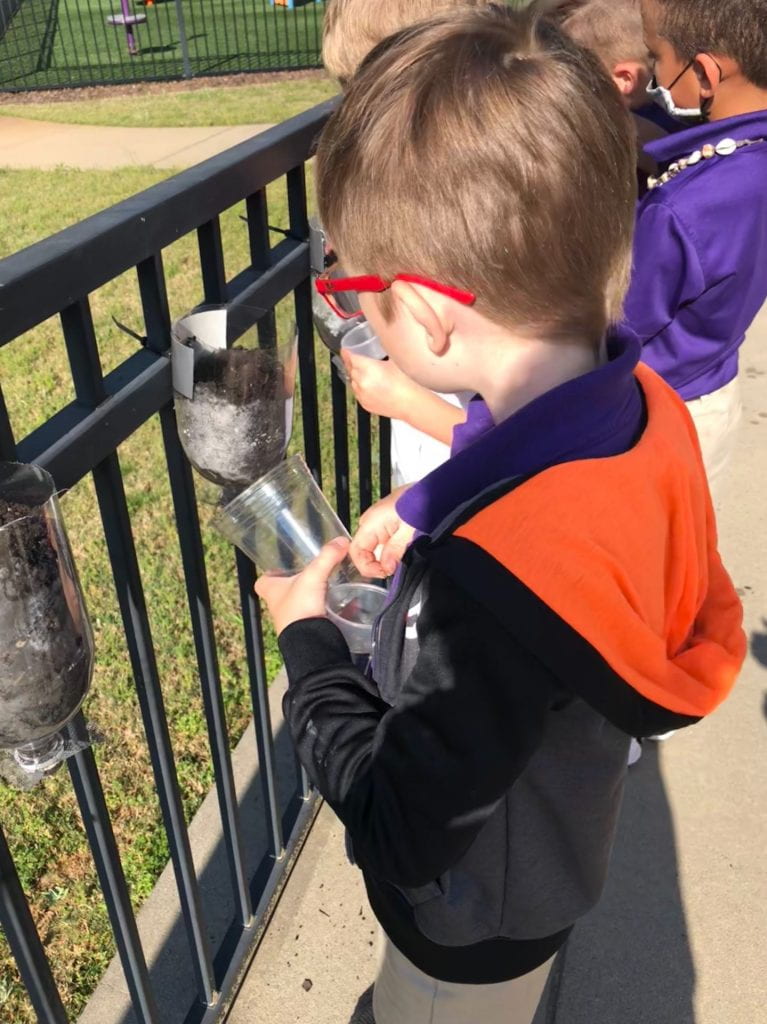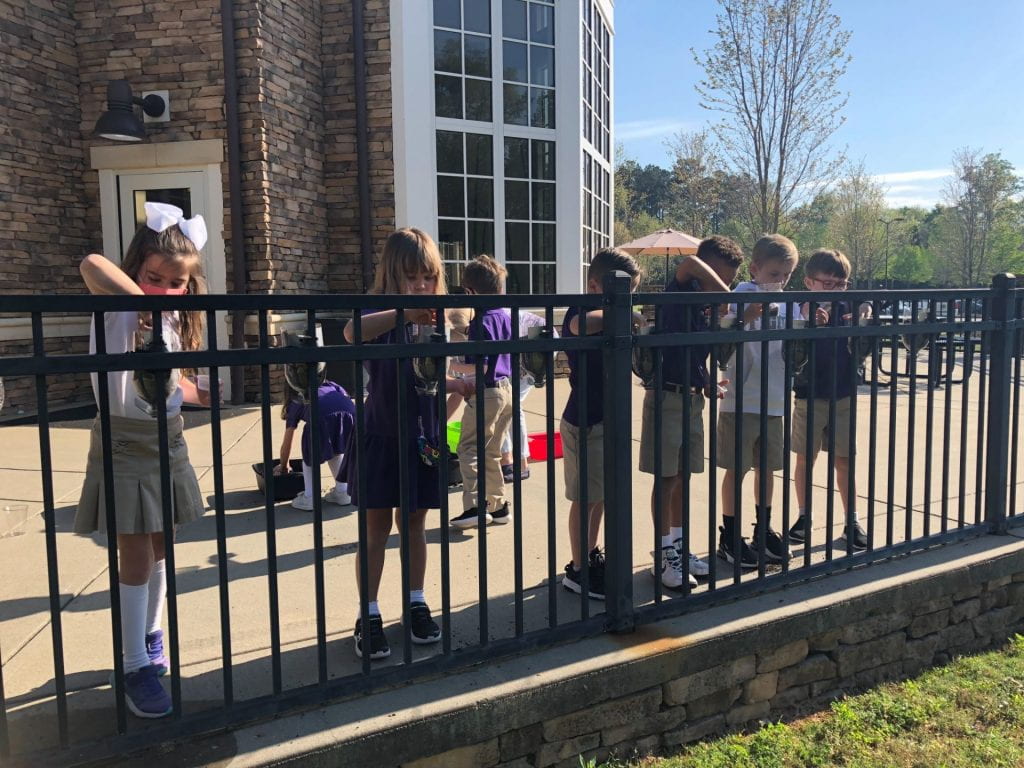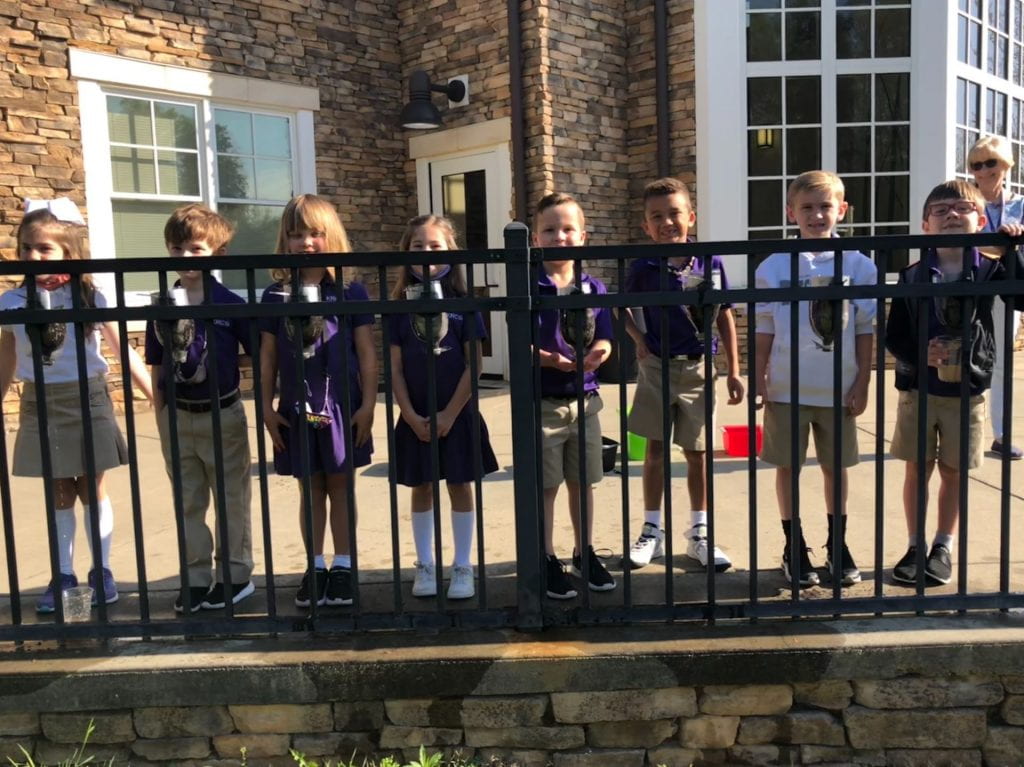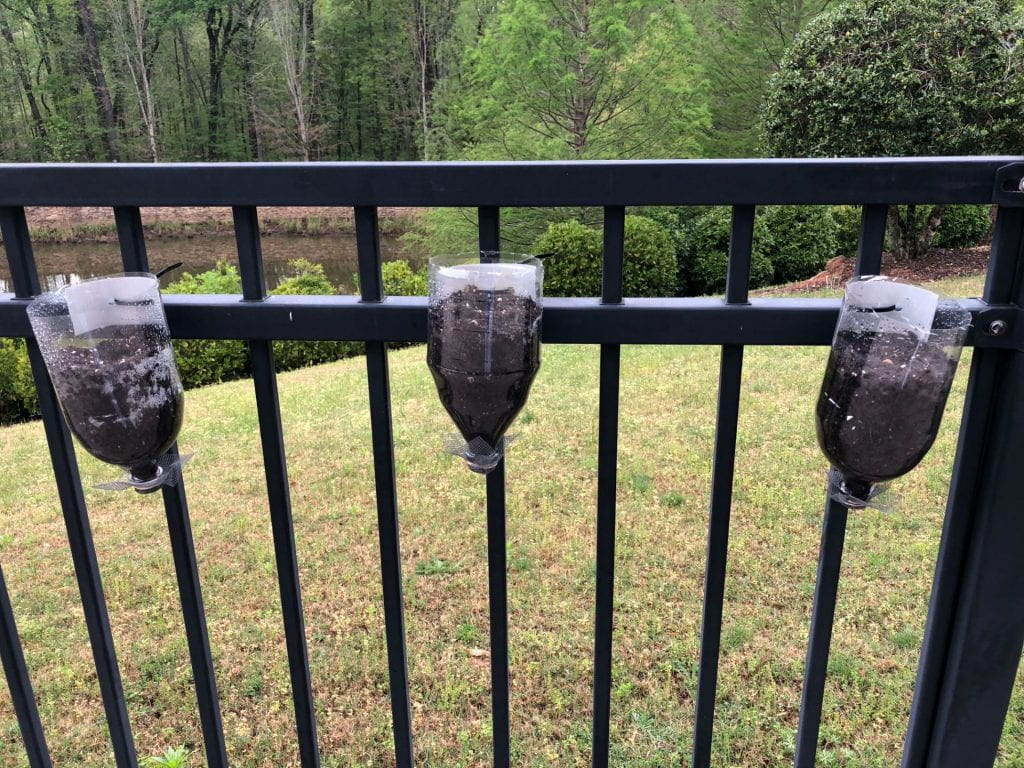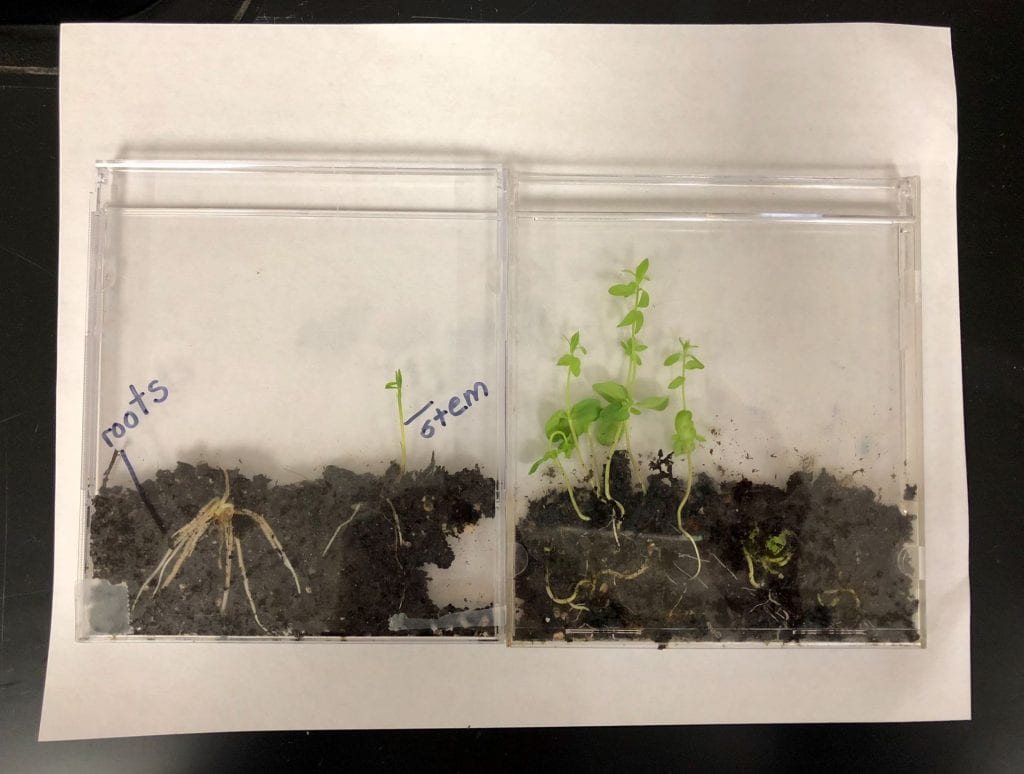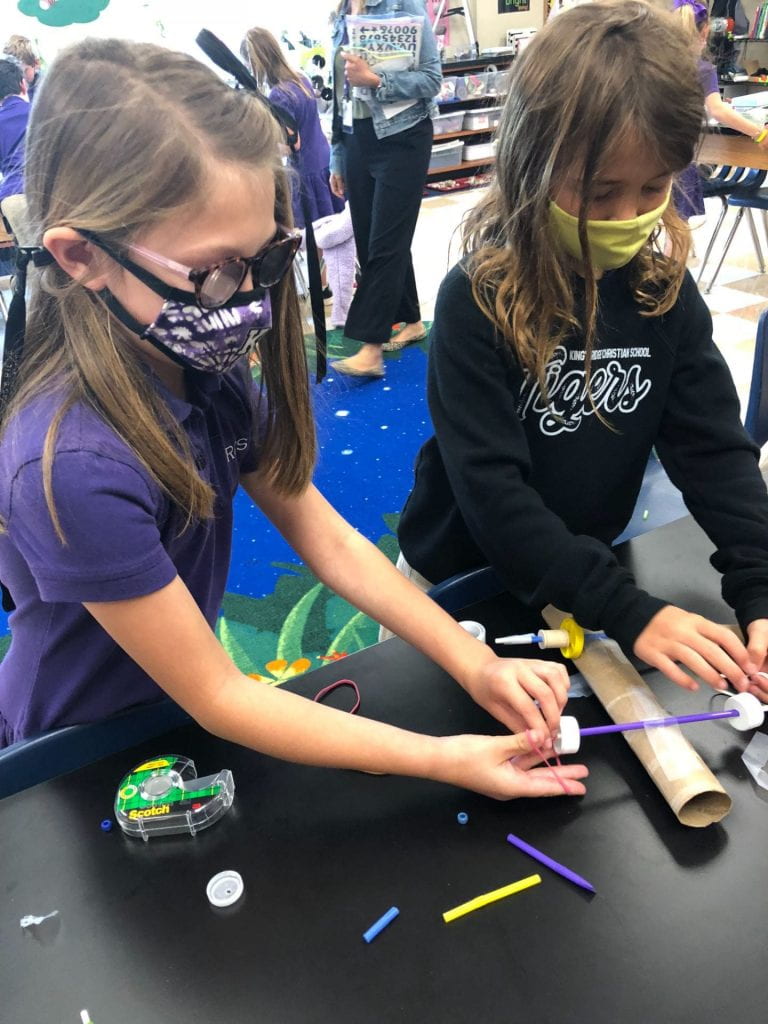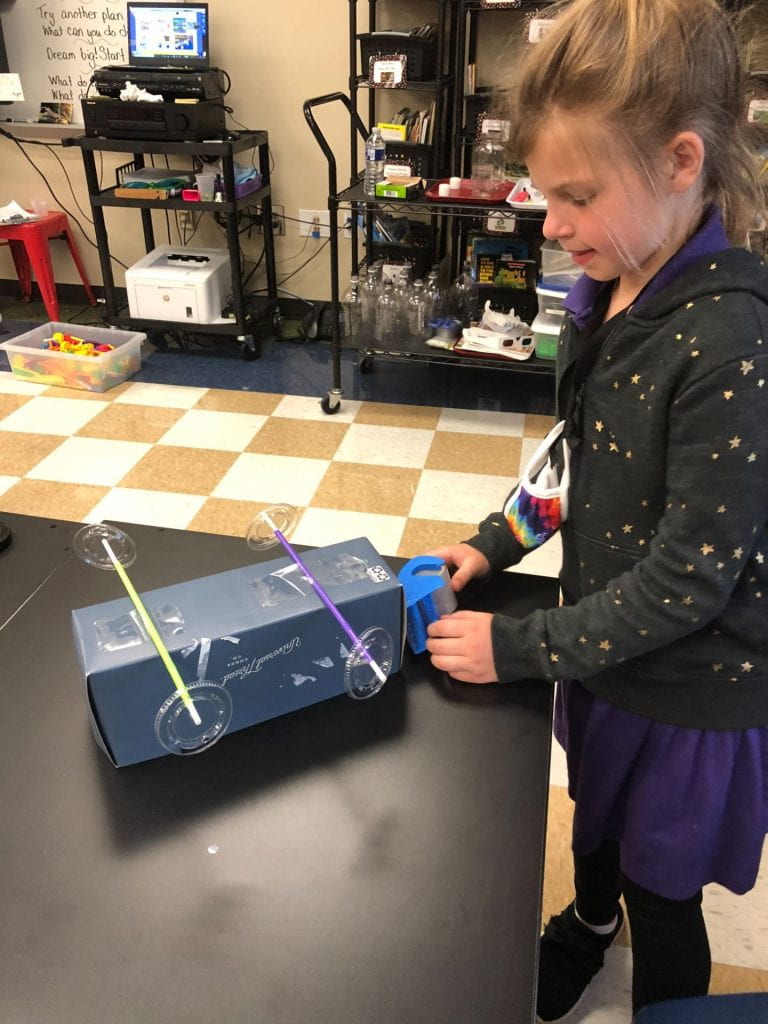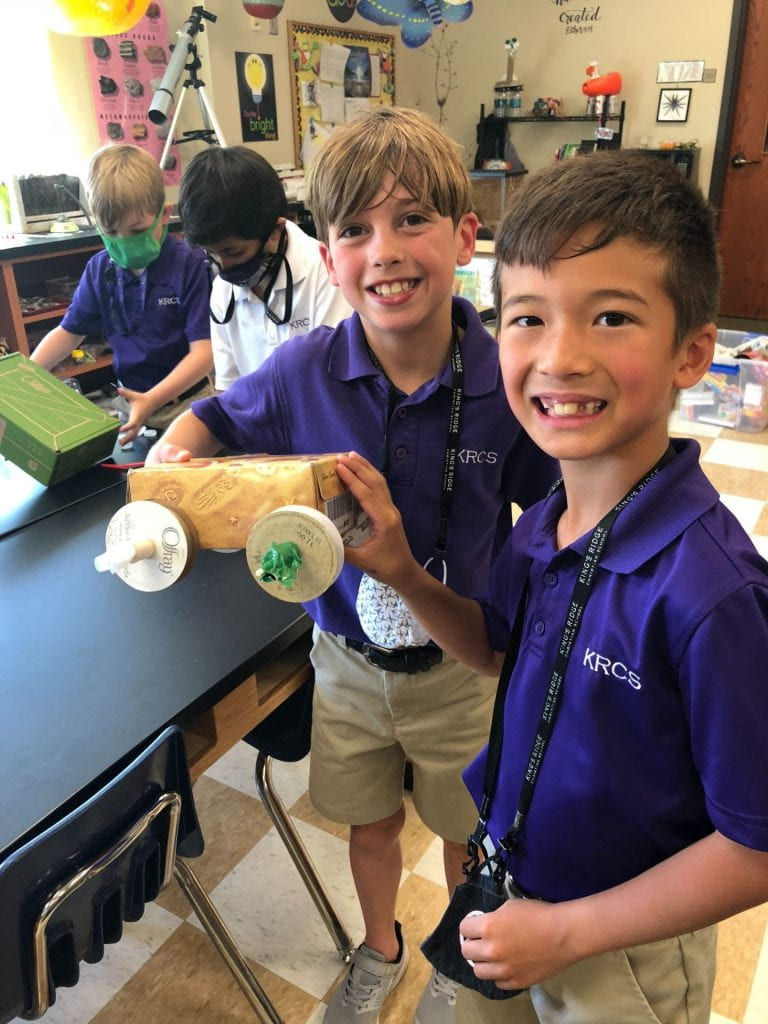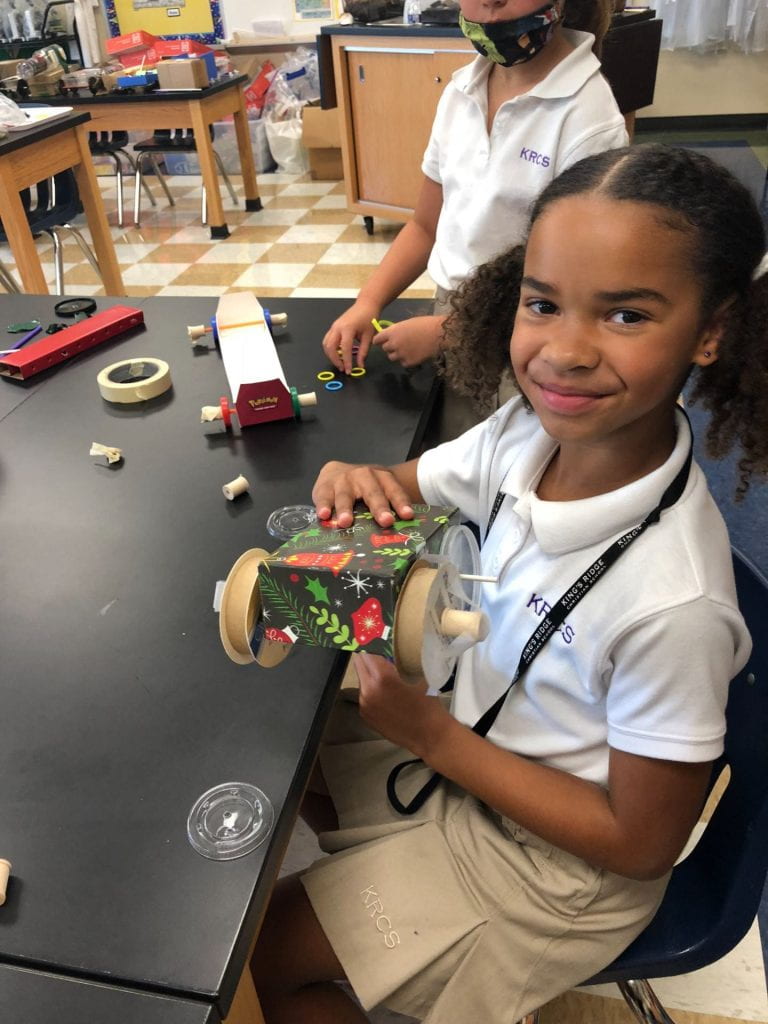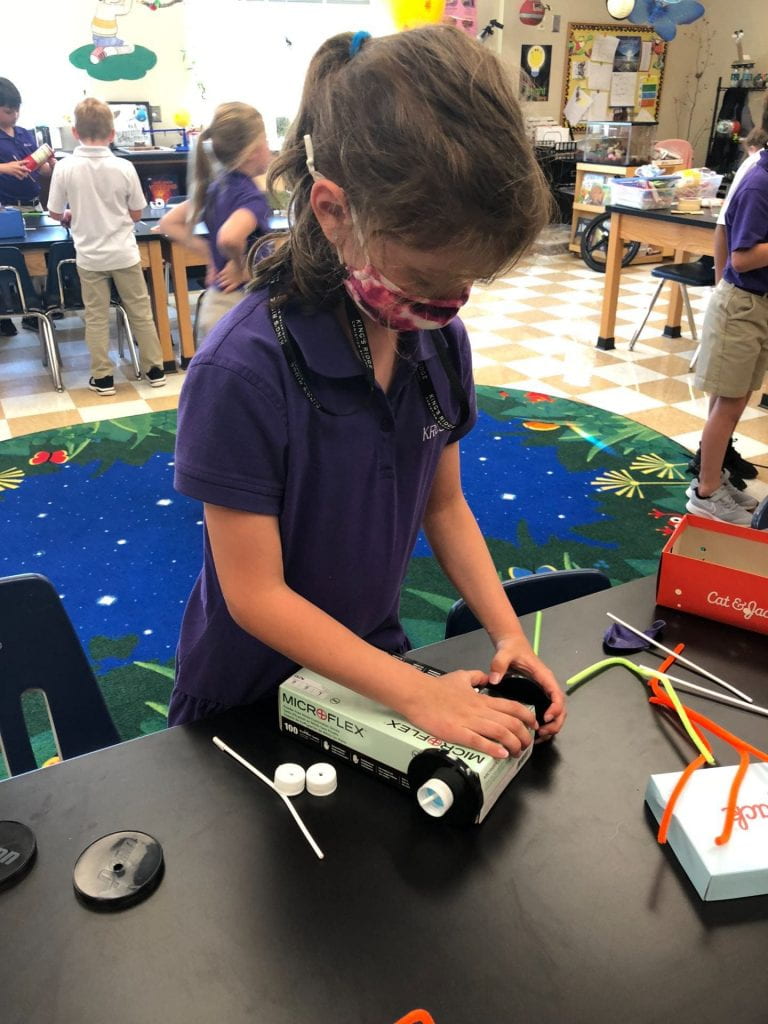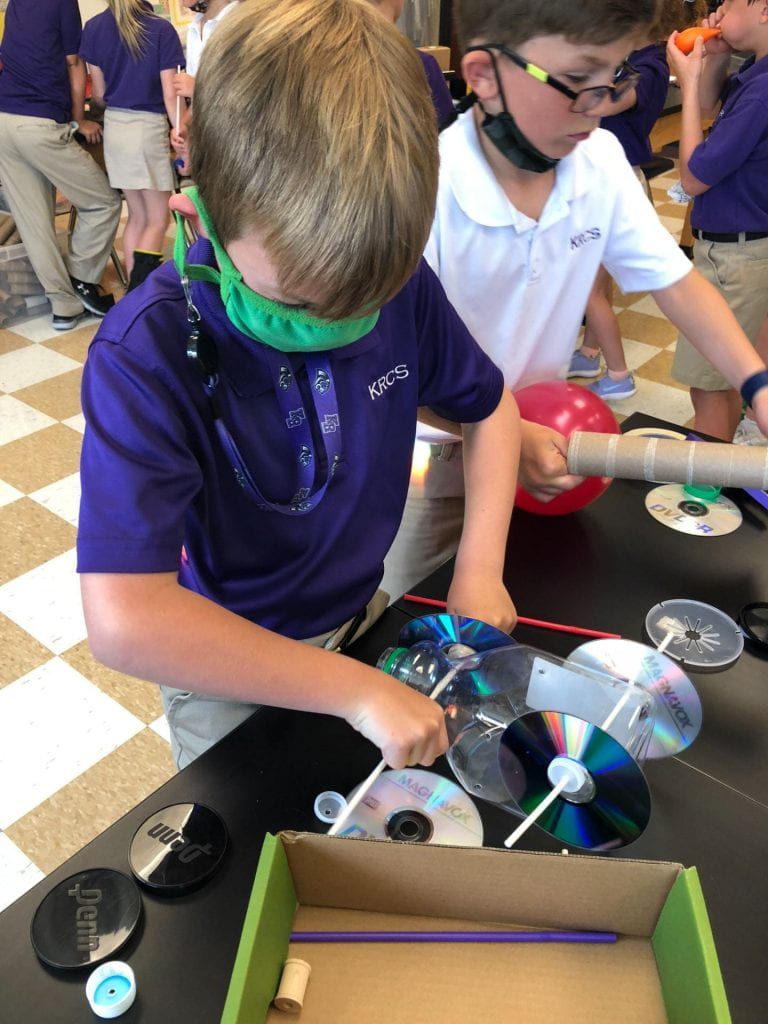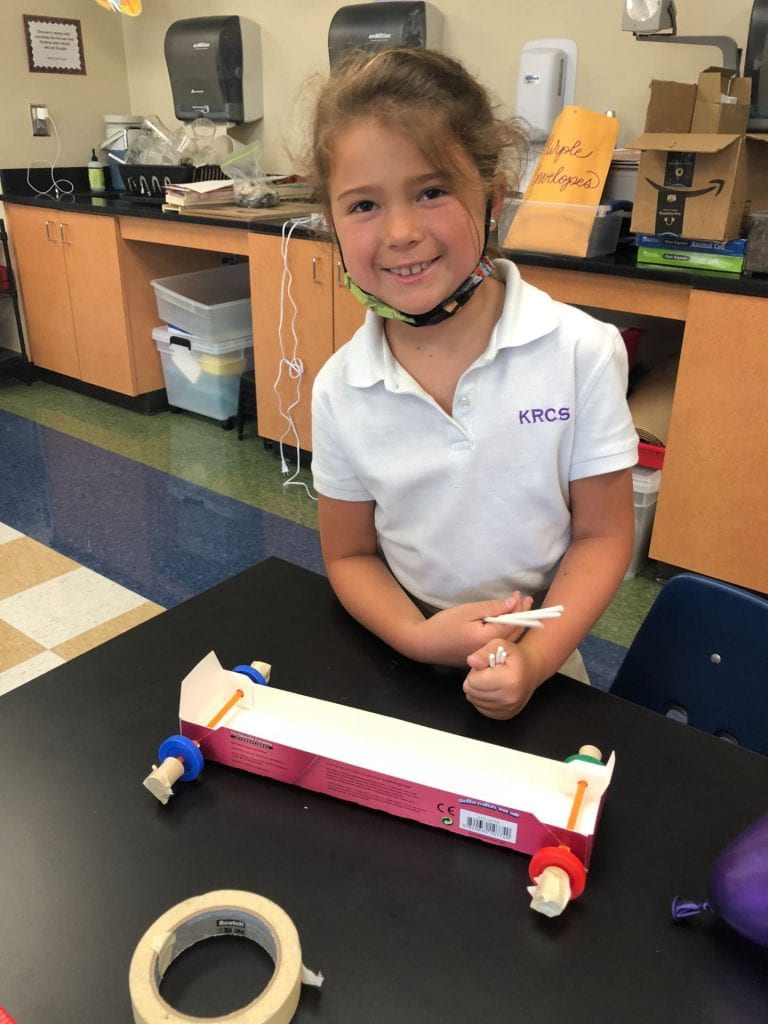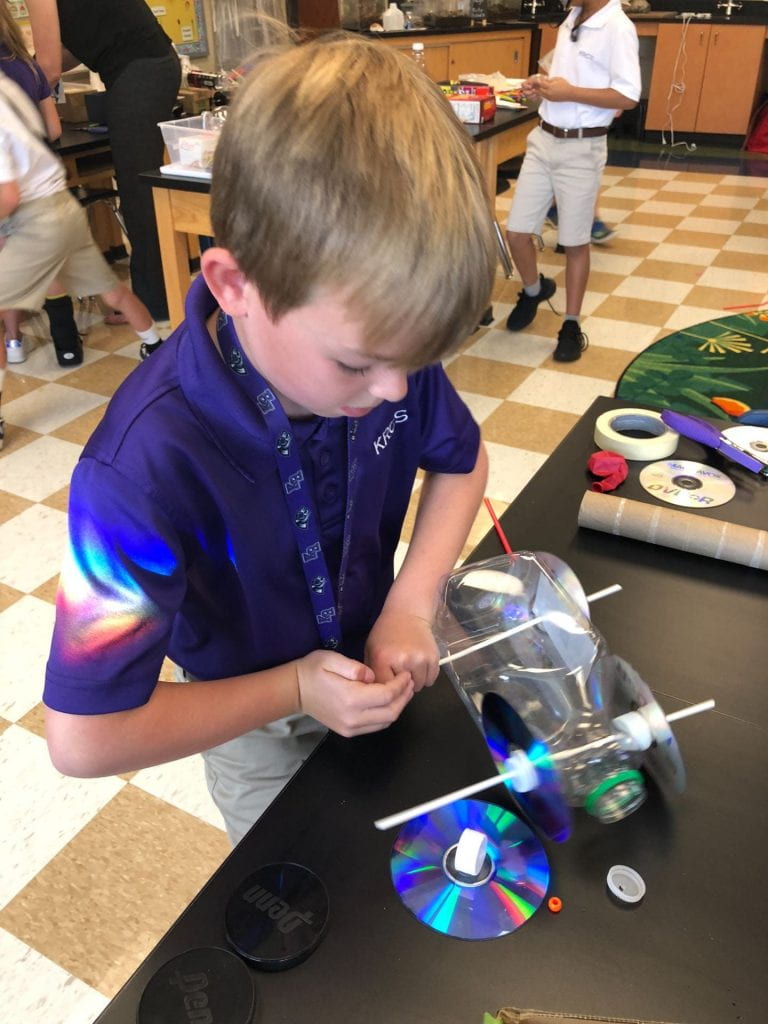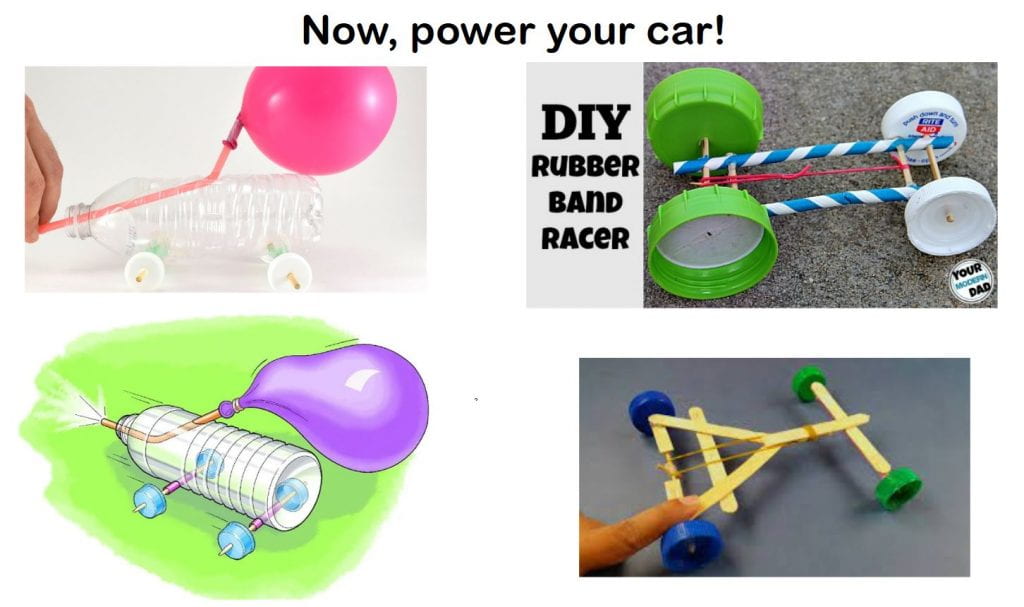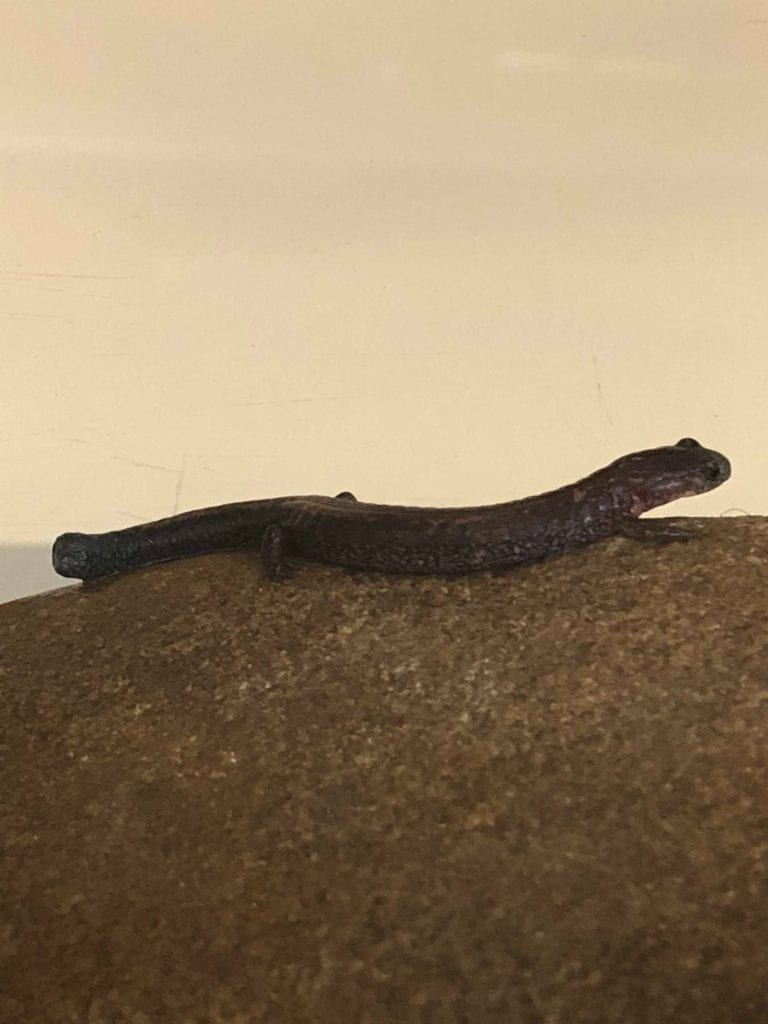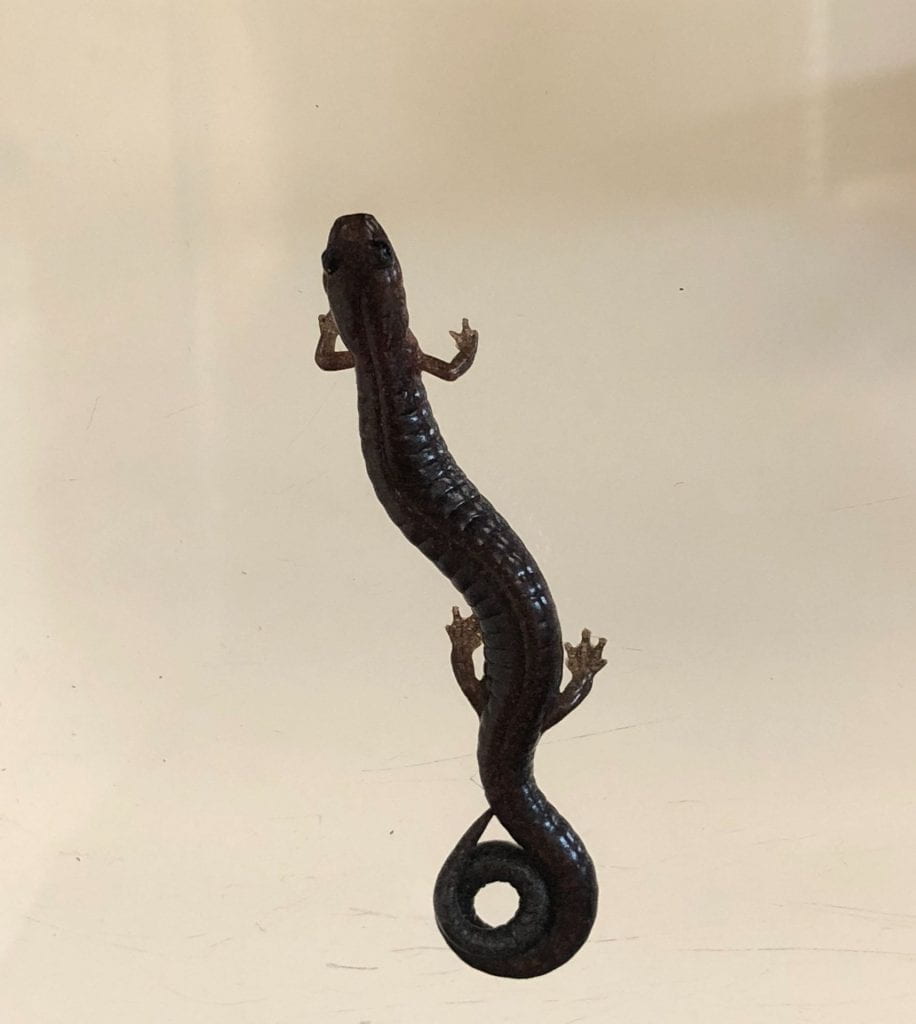Solar Ovens
Third grade environmentalists used solar power, an alternative energy source that is clean and renewable, to cook s’mores. The heat is transferred using radiation waves from the sun. We viewed several different design option for solar ovens and identified the common features. Click here to learn more about constructing solar ovens.
One of the assignments in the Upper School’s environmental studies class is to design a solar oven that can boil water, so this was a fun introductory investigation. Click here to watch college freshmen design solar ovens.
As we walked back to the lab, we placed our hand on a white car and then a black car in the parking lot. Heat passed through conduction, and we were amazed at how much hotter the black car felt. Dark colors absorb more light energy.
Back in the lab, I also shared some other items that are powered by solar energy. Look how fast the animals on the back table are moving. They are in the sunlight.
All About Frogs
With my youngest scientists, I always try to begin lab with a song or fingerplay. We sang Five Little Freckled Frogs which connects math and science.
PreK biologists observed our lab frog, Yoda, and noticed the changes in our tadpoles.
We put the stages of metamorphosis in order We realized that we should be in a circle, not a line, because this is a life cycle.
We used forceps, a science tool, to feed our frogs. We pretended the rice were small bugs which was a great activity to develop fine motor skills!
Frogs are amphibians and must keep their skin moist. They don’t just wear it; they drink and breathe through it. Frogs don’t usually swallow water like we do. Instead, they absorb most of the moisture they need through their skin, so I introduced the concept of absorbency. We moved to the lab tables and used pipettes to test whether the materials were absorbent or nonabsorbent. Notice items around your house that absorb water, such as towels or those that do not, like rainboots or umbrellas.
Sound and Light
Fourth grade physicists continued their study of sound and light. As we rubbed our fingers over the rim of the glasses, vibrations were produced inside the glass which in turn created a sound. Click here to watch a street musician. As we poured water in and out of the goblets, the pitch changed. Click here to watch the toothpick challenge.
Energy efficient bulbs emit less heat than traditional incandescent bulbs and are safer to operate and cut energy costs associated with home cooling. They also last longer and save in electricity costs over their lifetime.
We proved the efficiency of the bulbs by placing heat sensitive sheets behind them. The bulb that used more of its energy for light, didn’t release much heat onto the sheet. Look at all the colors that were displayed on the heat sensitive sheet from the less efficient bulb. Which colors represent the most heat?
After a brief lesson about the heart, we used stethoscopes to listen to a variety of sounds around us, such as our hearts, stomach, the motor on the fish tank, the lab fridge, and finger tapping. Click here to watch an informative video about the heart.
Turtles
Four Legs!
Investigating Rocks and Balance
It’s always a treat watching young children explore and manipulate natural materials Scientists classify everything, so my kindergarten geologists learned to sort rocks by physical properties-color, size, texture (rough or smooth), and luster (shiny or dull). It was a 70s dress down day!
Then we made rock sculptures with river stones which is a fun way to develop those critical thinking skills.
Planters from Recycled Materials
PreFirst botanists reviewed the parts of the plant and what plants require to grow and thrive. Then we moved outside to fill our planters, made from recycled bottles, with soil. Each scientist planted a nasturtium, moon flower, and morning glory seed, and watered them to begin the growing process.
I also shared planters that I made from CD cases. I planted bean and flax seeds.
Wheel and Axle
Second grade engineers continued their study of simple machines with a lab that focused on wheels and axles. Click here to learn more about wheels and axles. These physicists were challenged to construct a vehicle with wheels that could move freely on its axles. A variety of materials were available for wheels, axles, and chassis, as well as a variety of adhesive choices. Determining how to attach the wheels to the chassis was one of the design challenges. As they used the design process, they realized that some sort of hub caps were necessary to hold the wheels on the axles. At the end of the lab, some of the wheels did not touch the ground, some wheels were tilted, and others did not turn. I witnessed problem solving and collaboration as they worked to resolve these issues. In part two of this lab, we refined our designs after we tested our prototypes.
